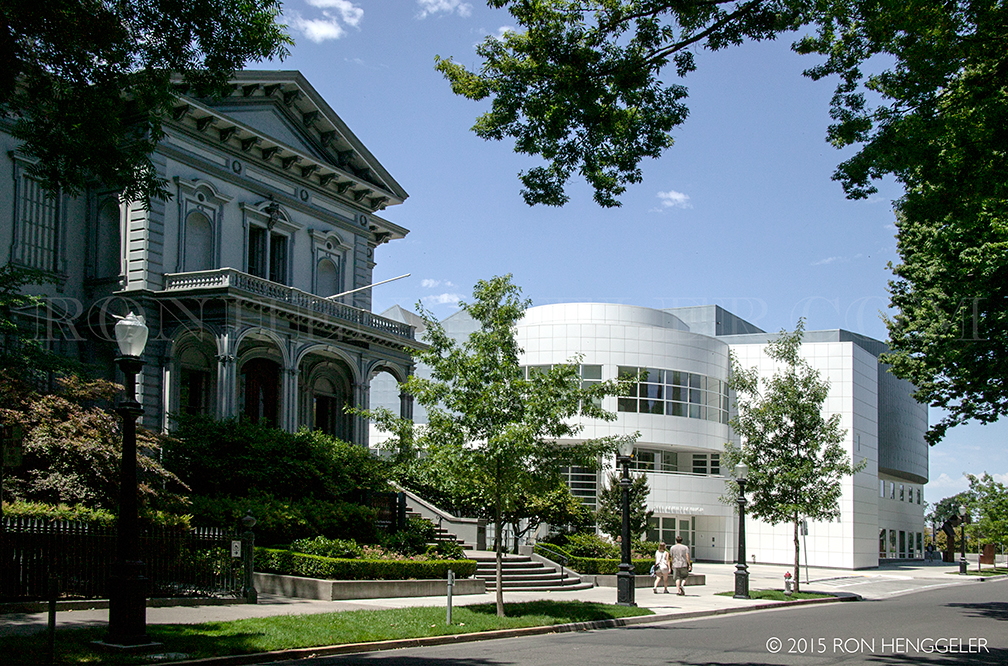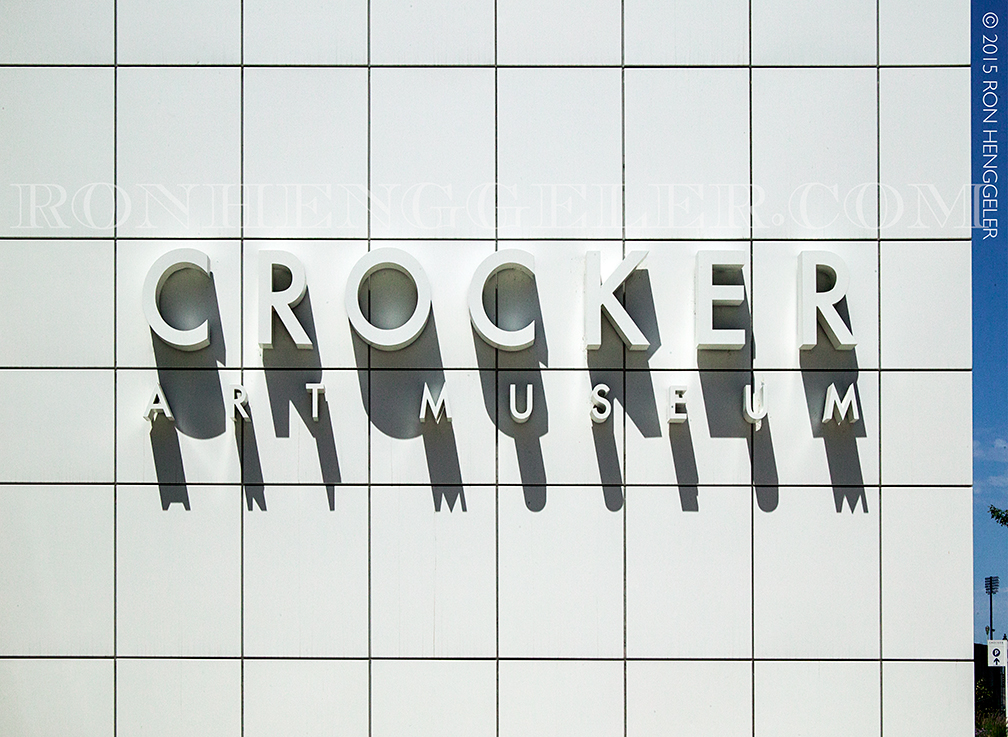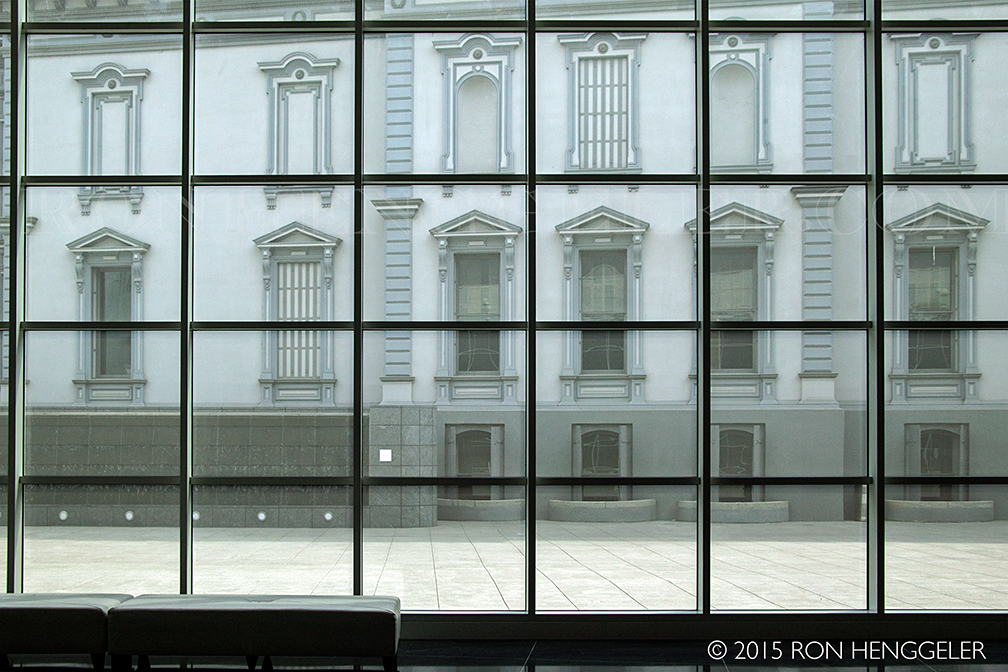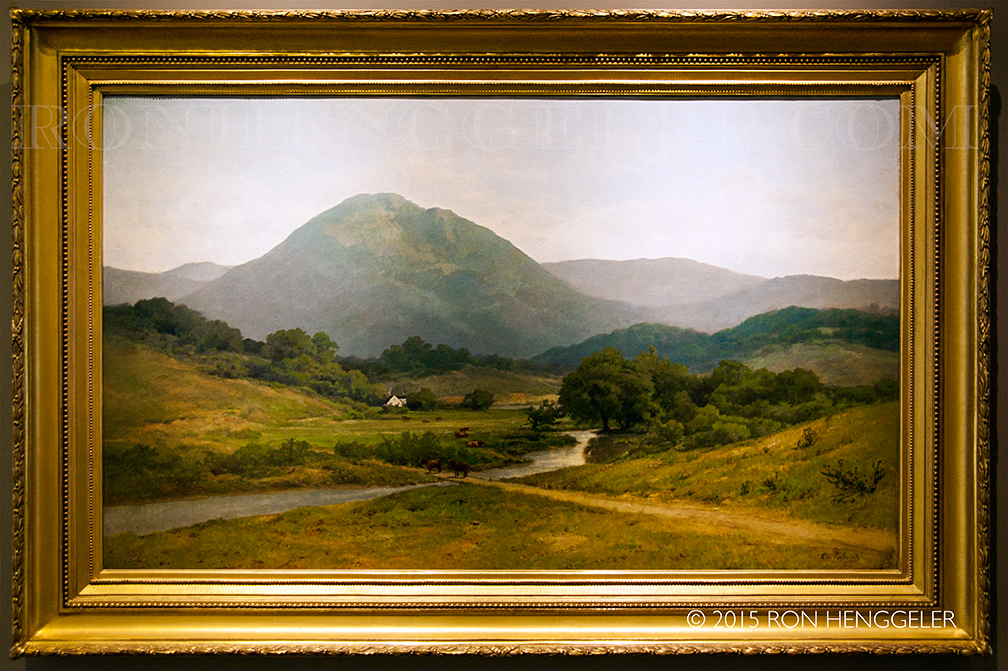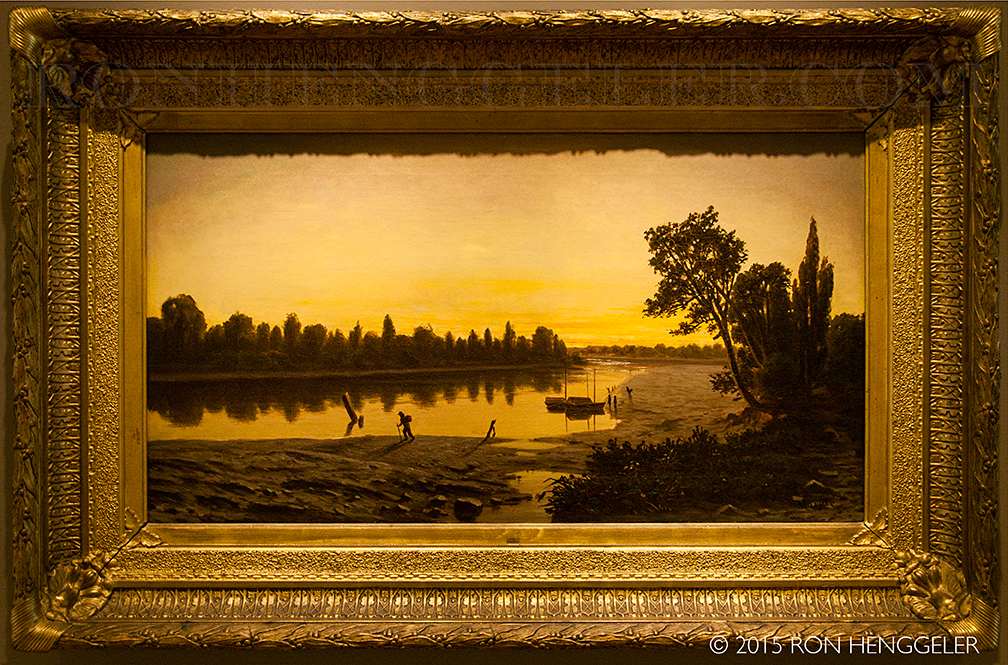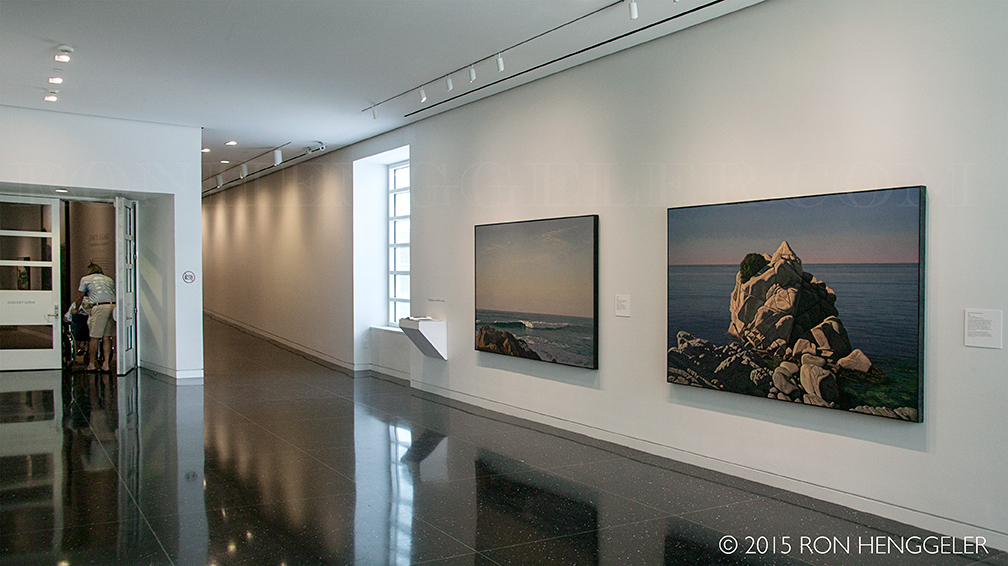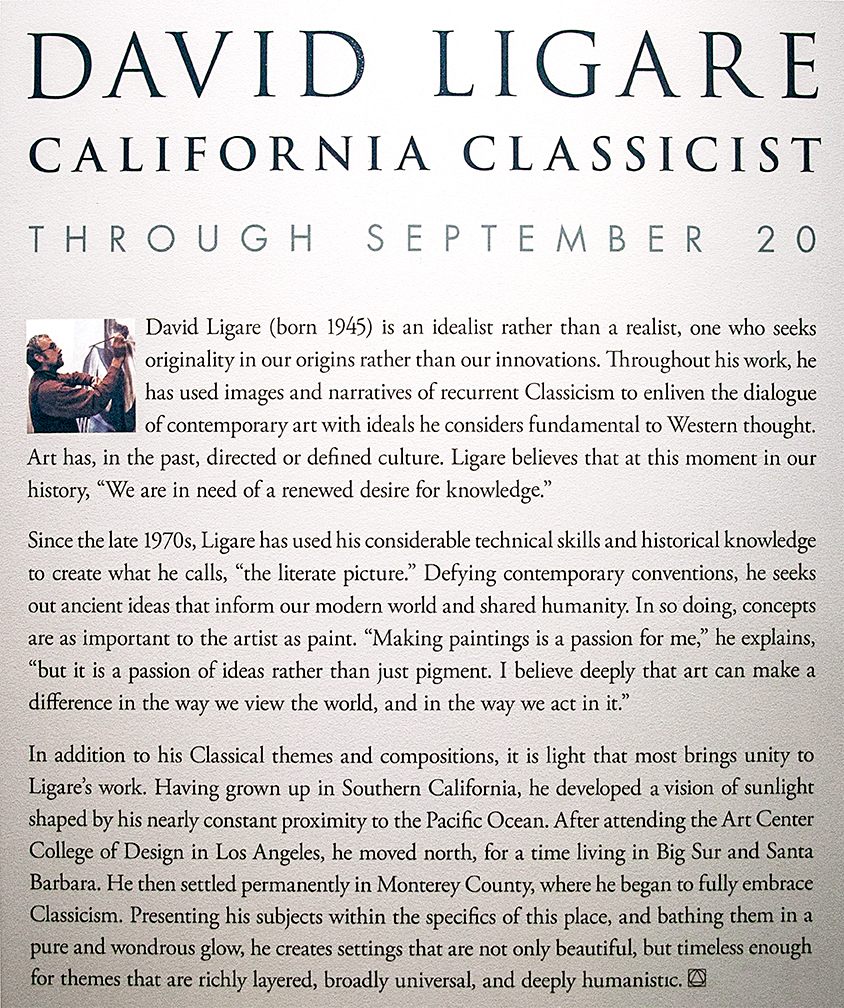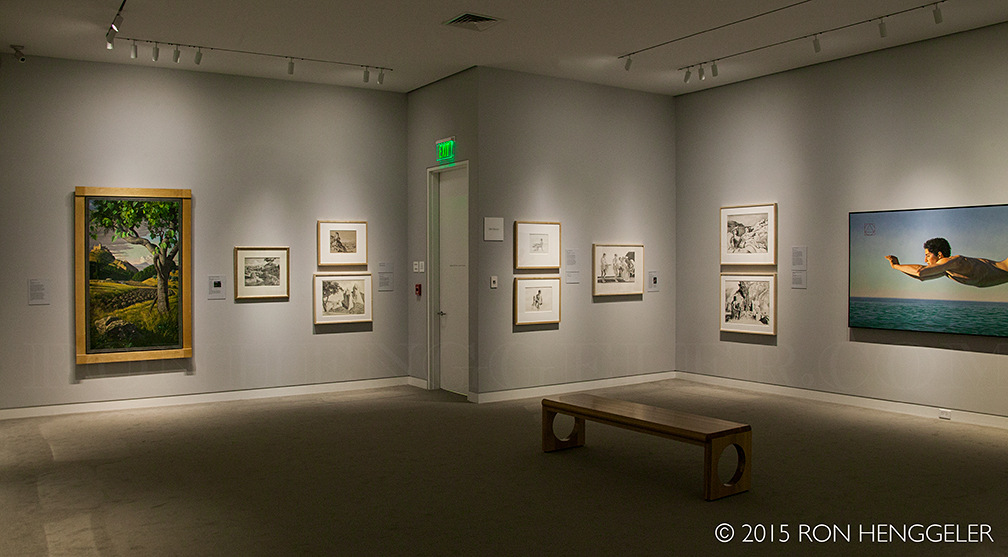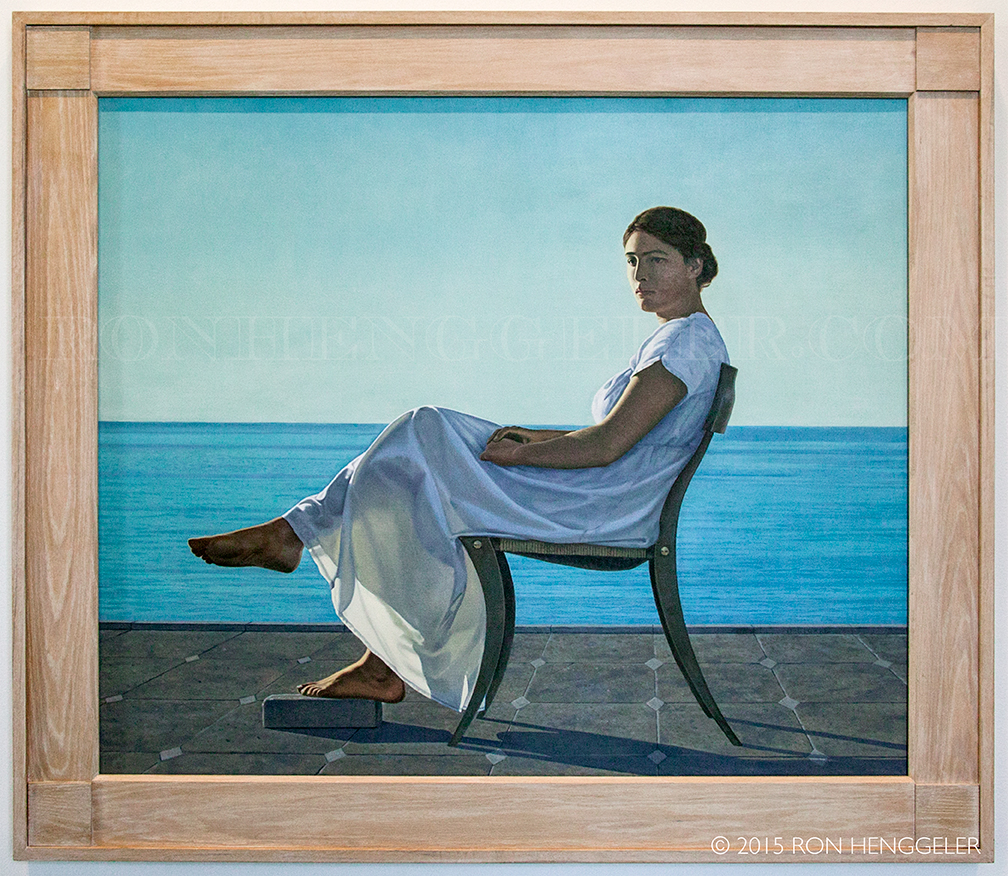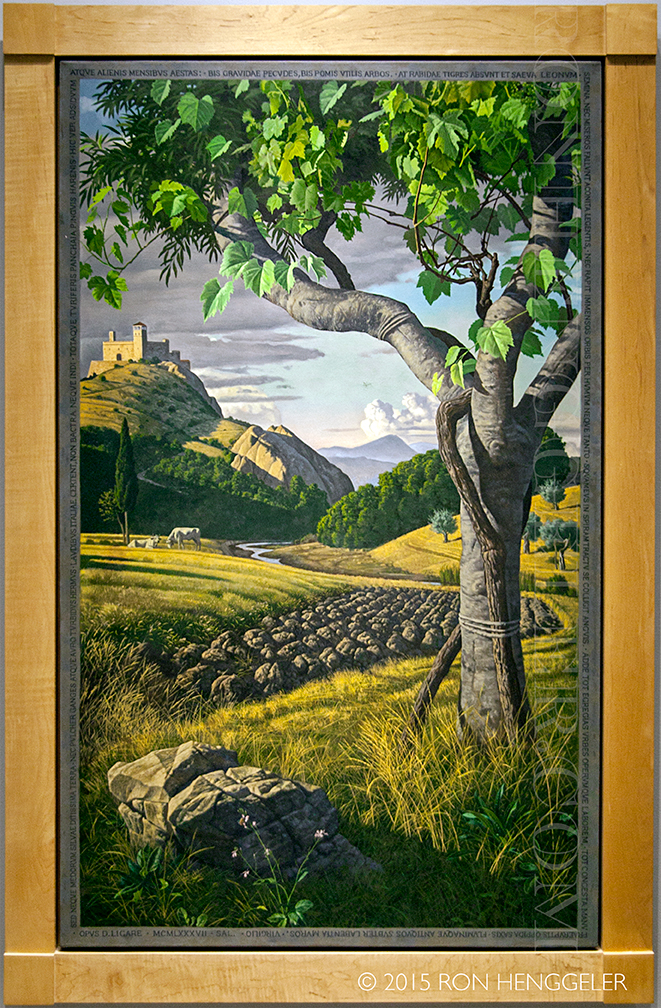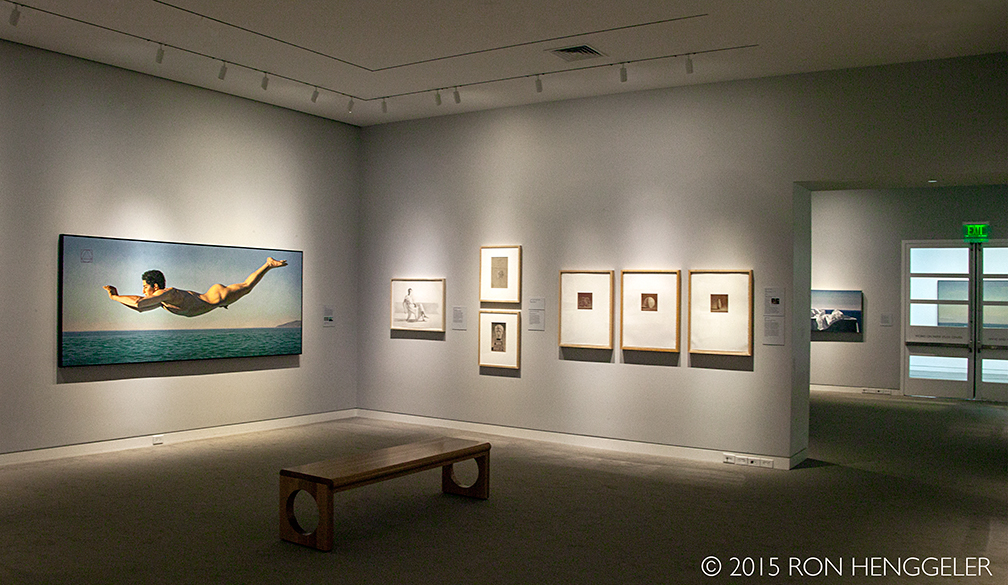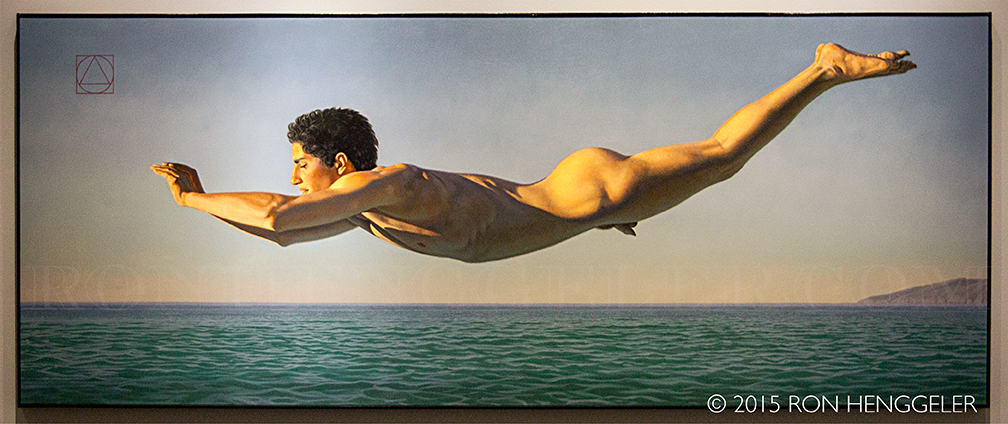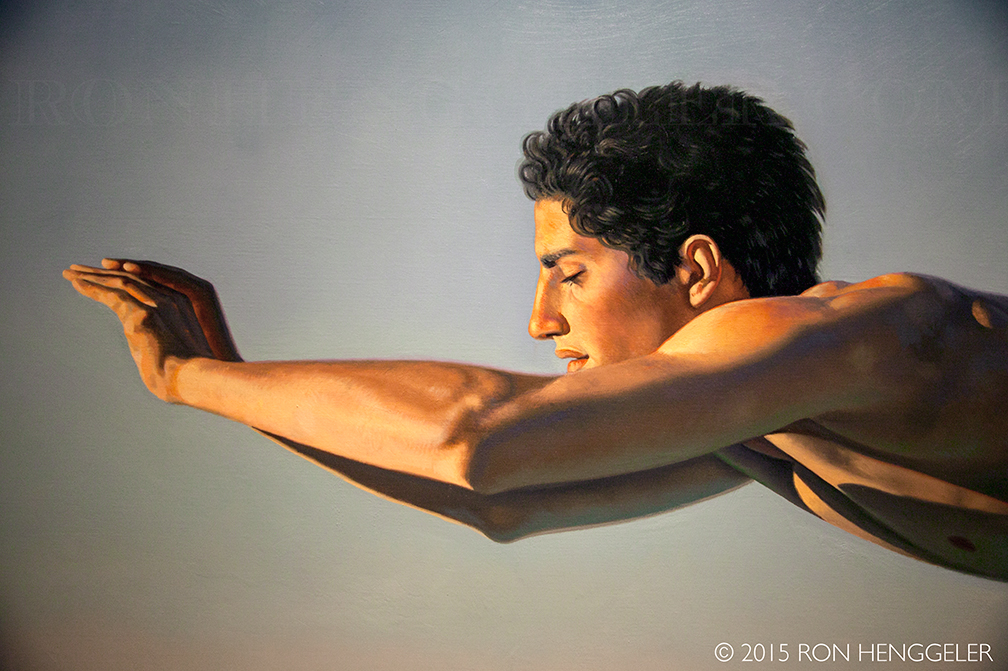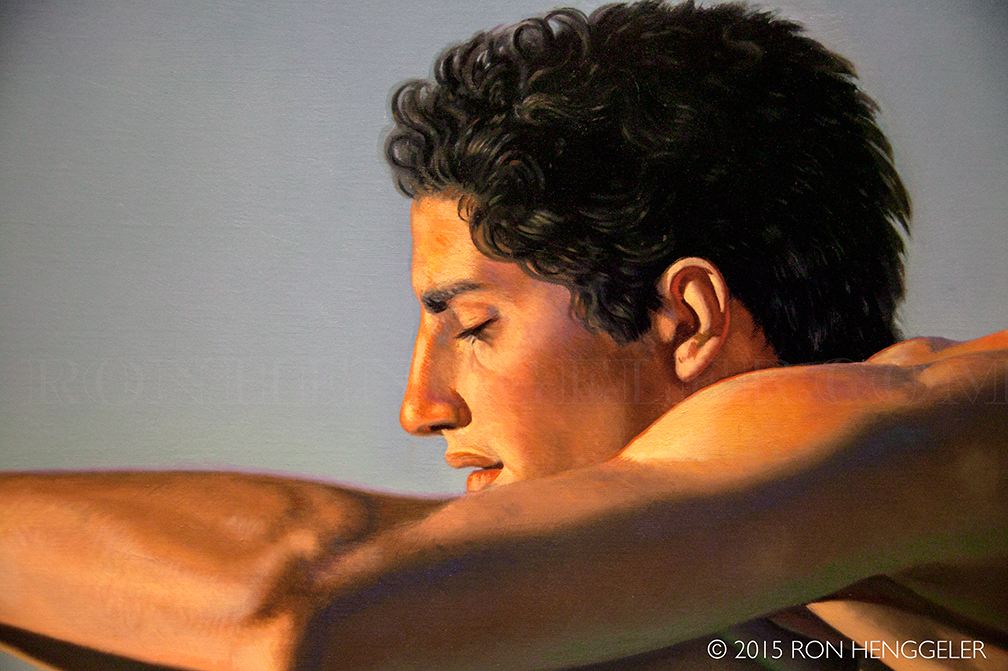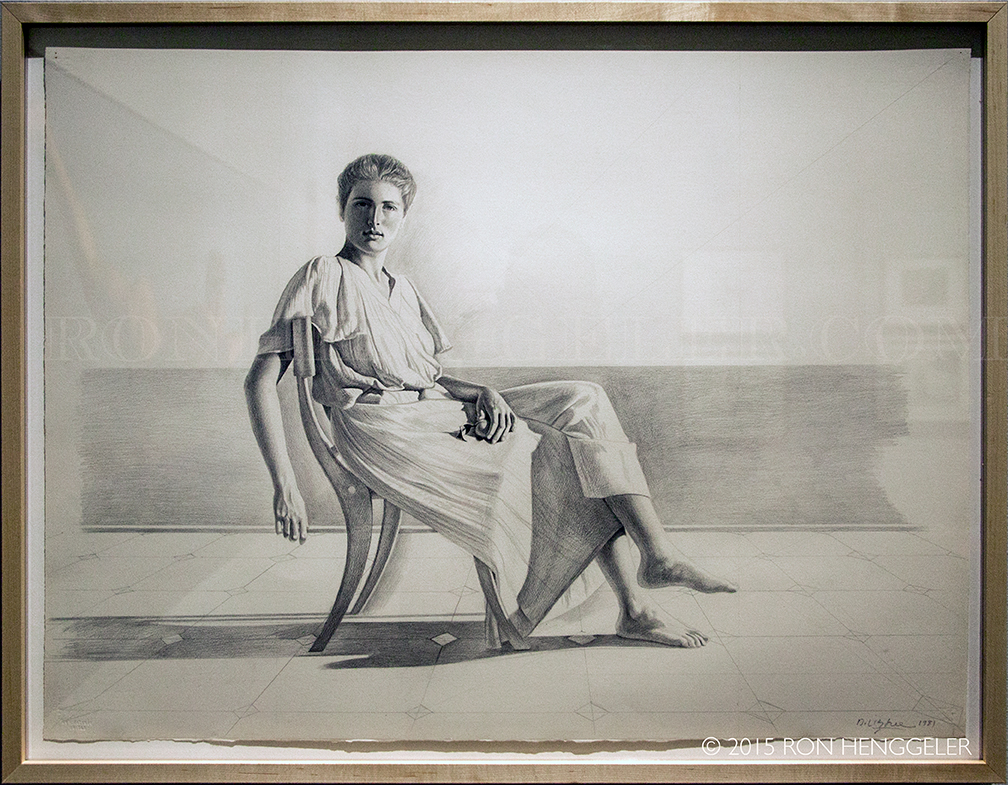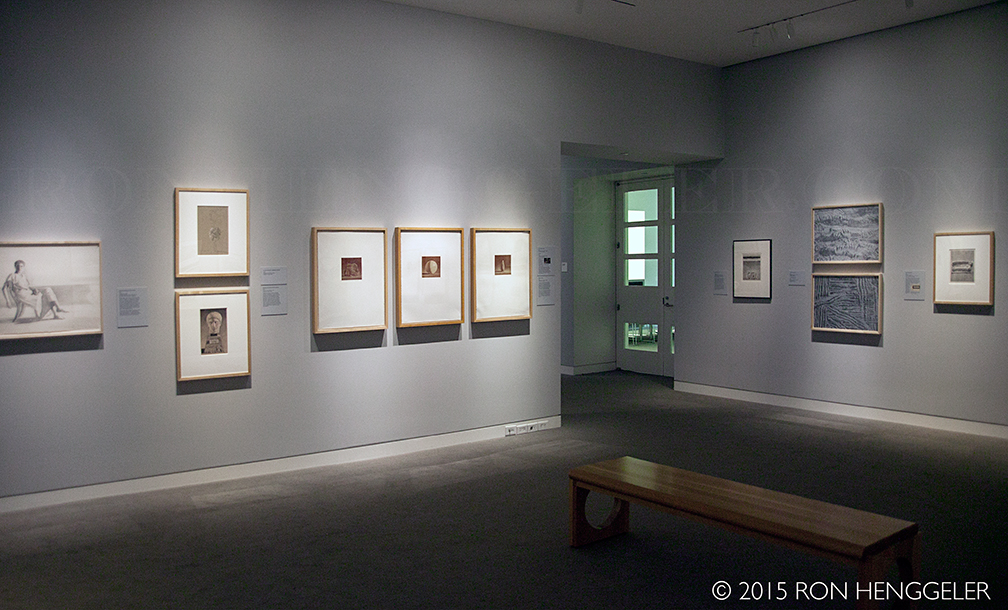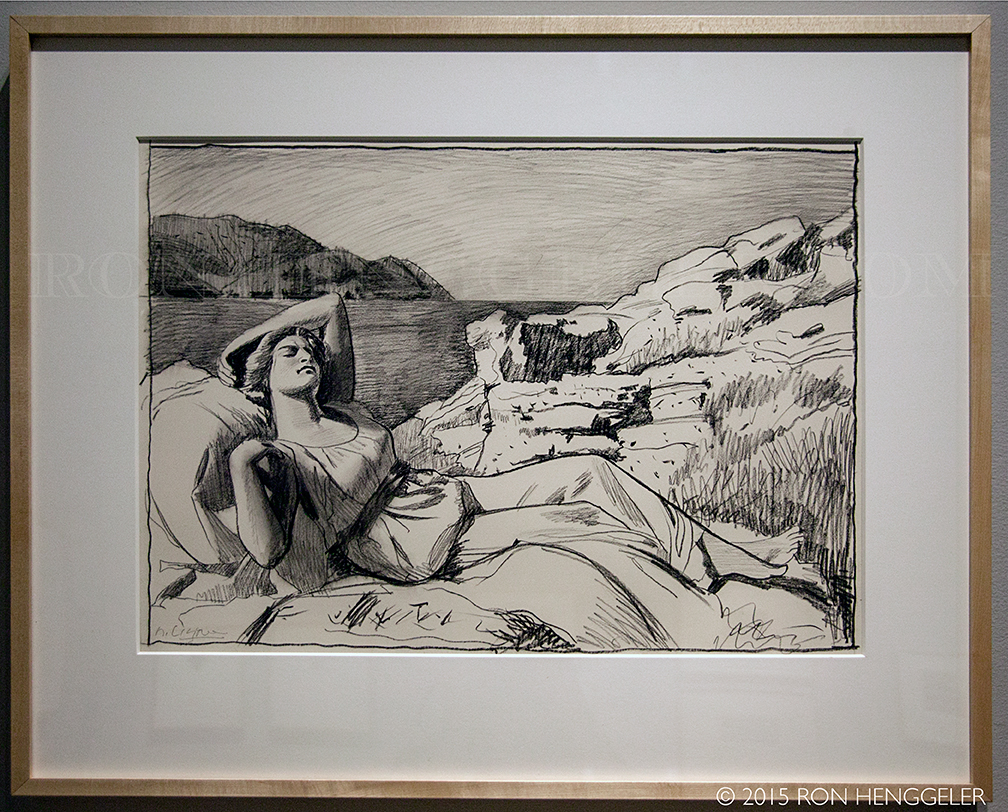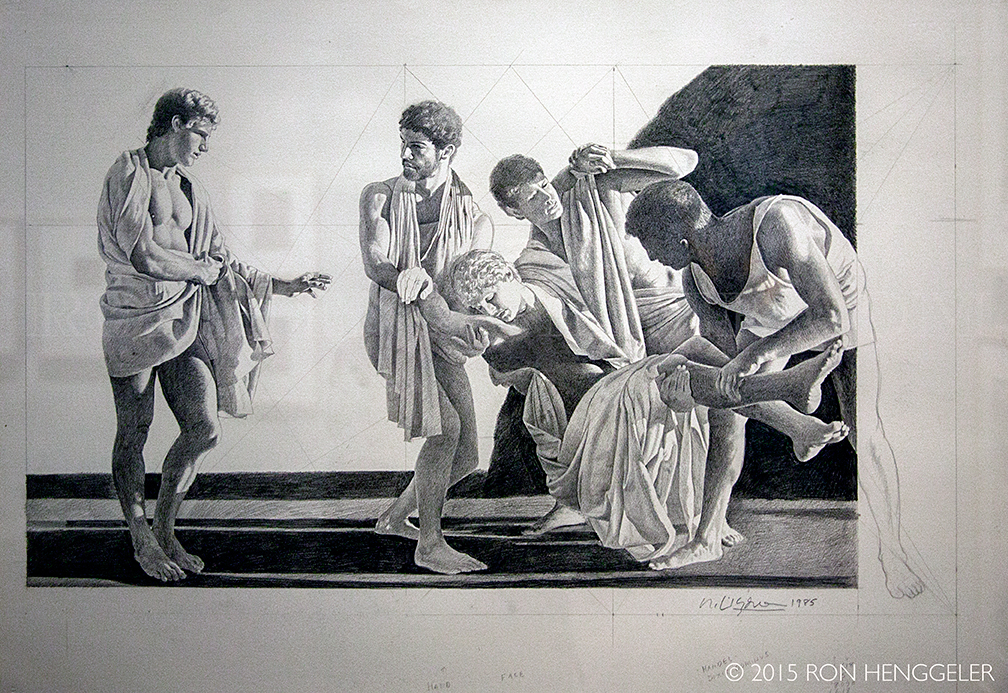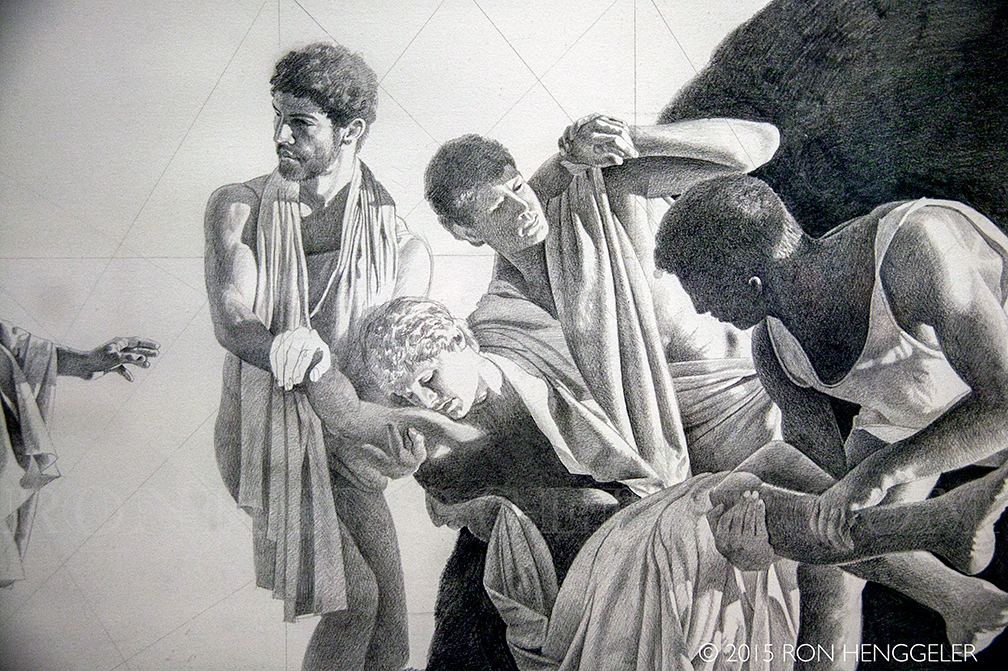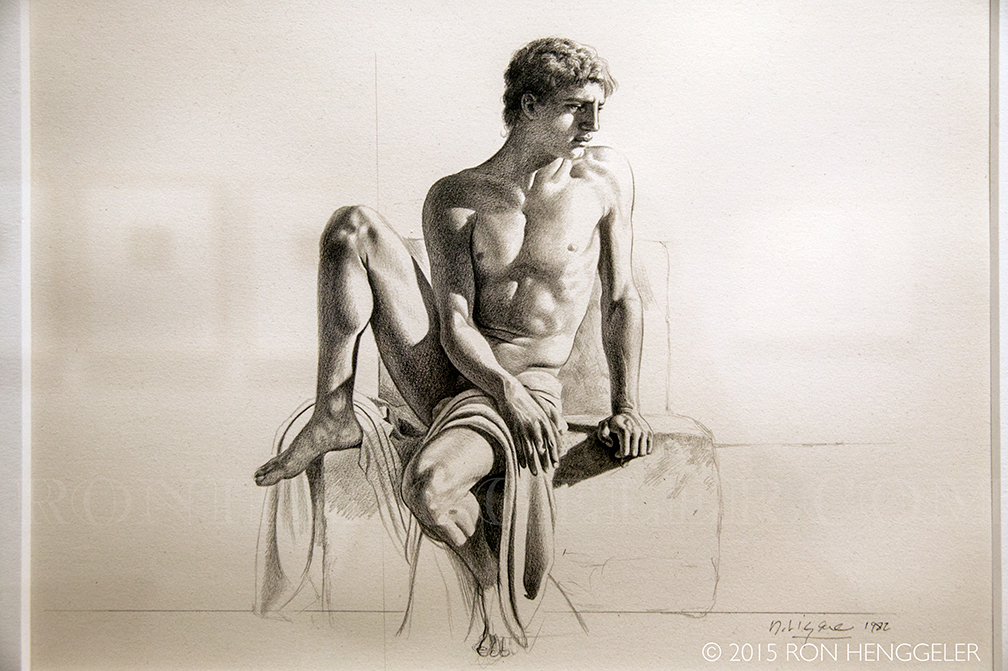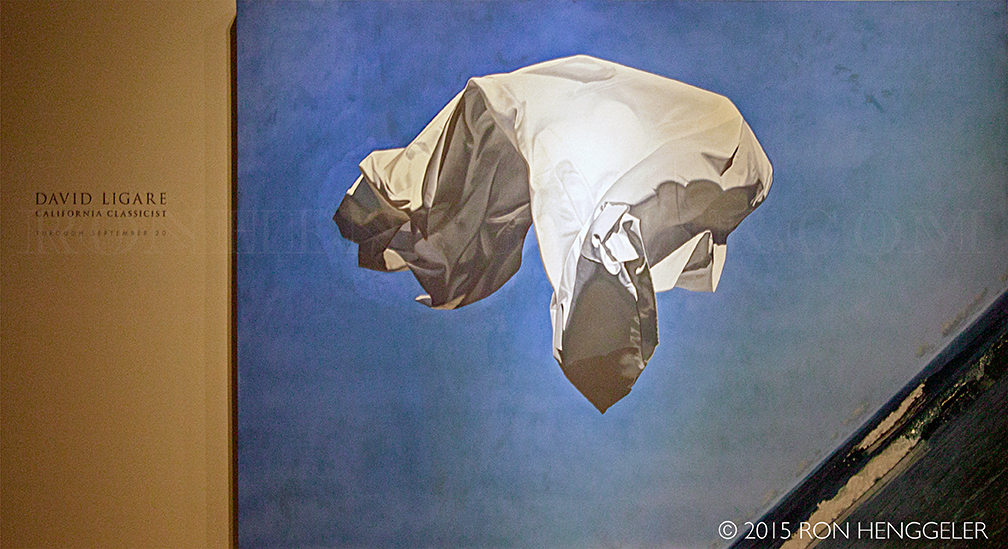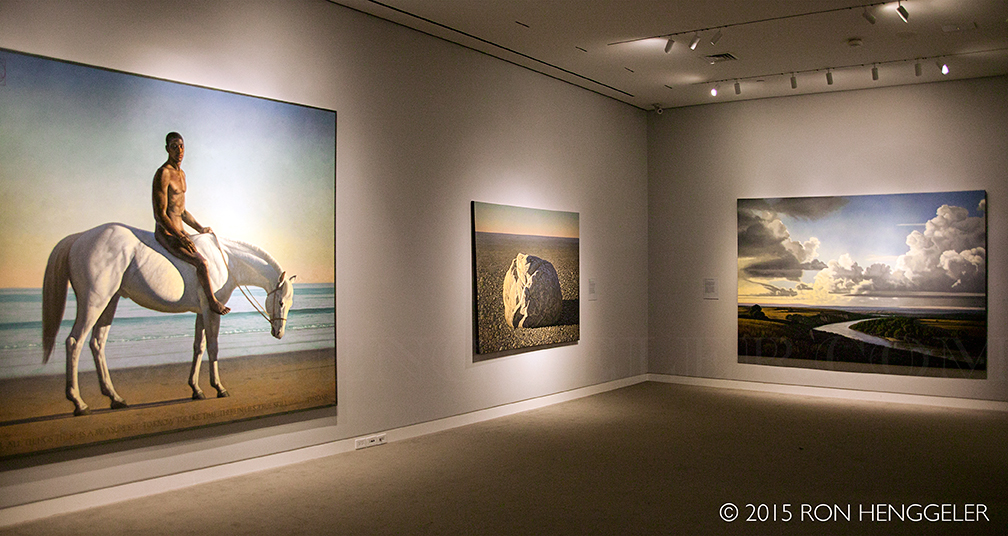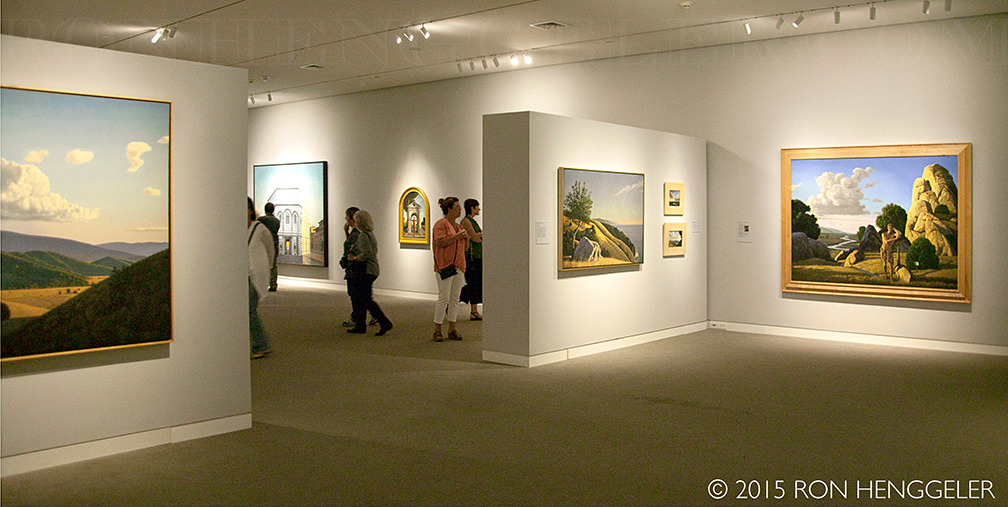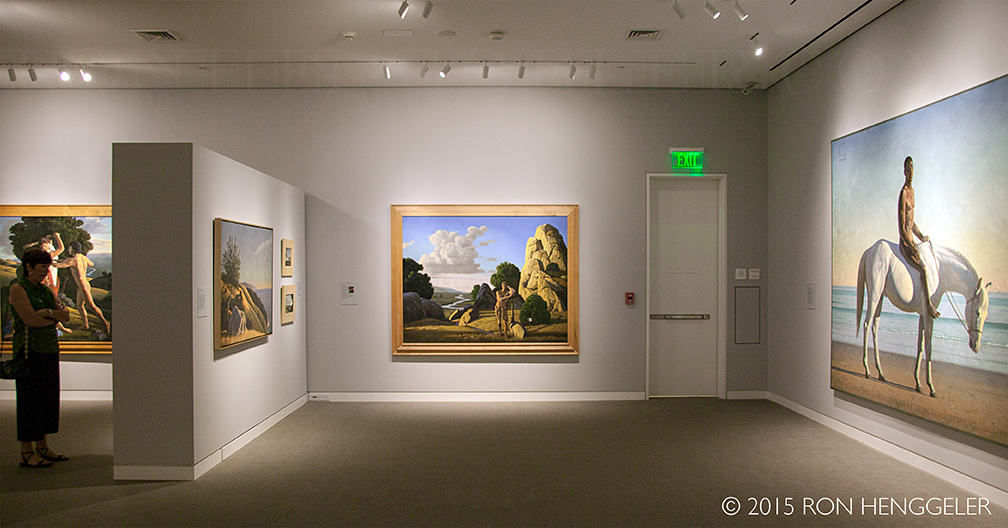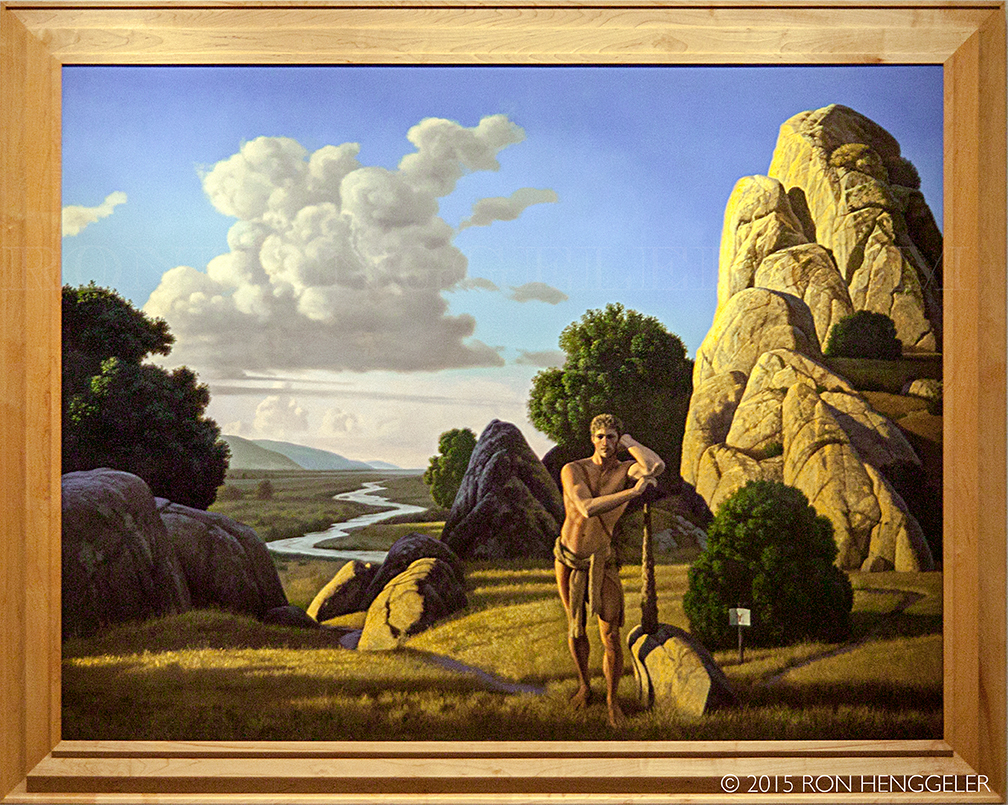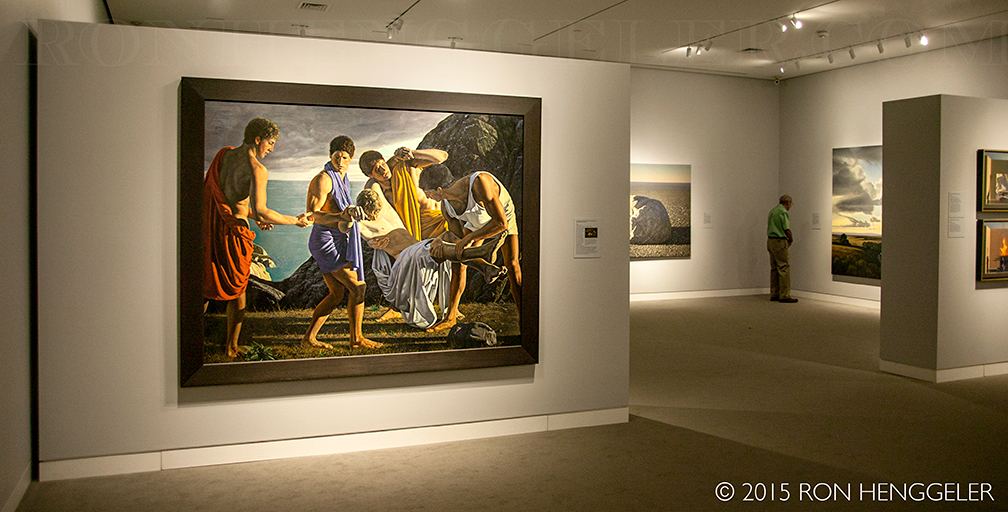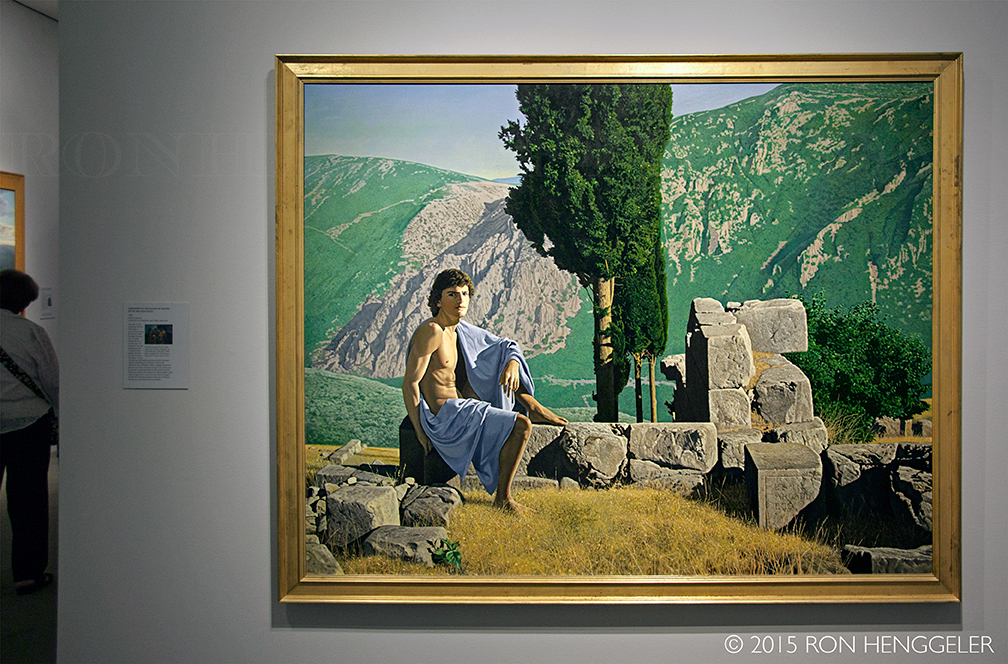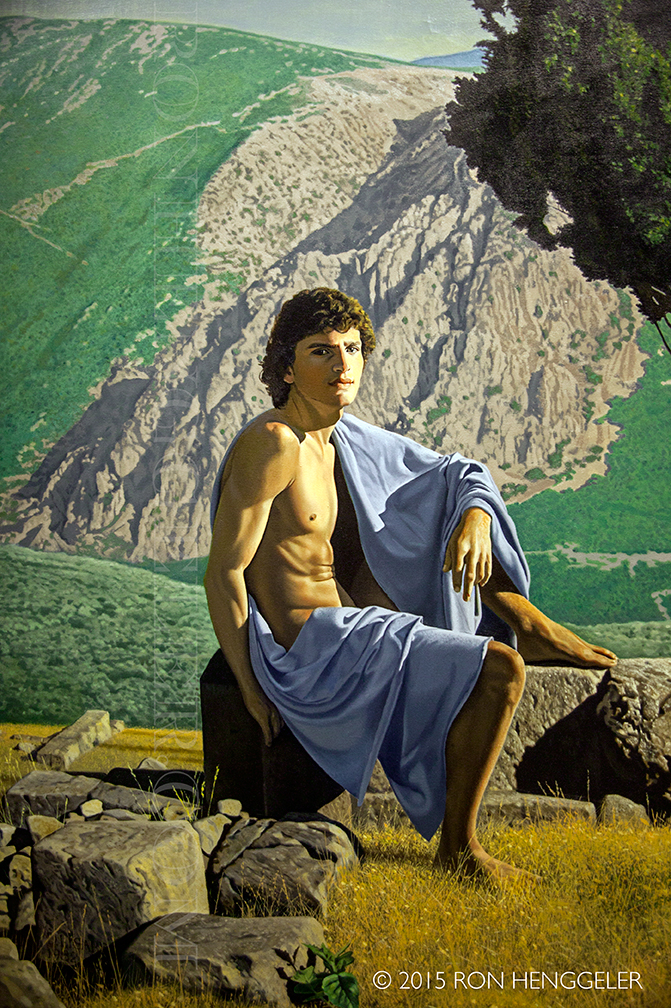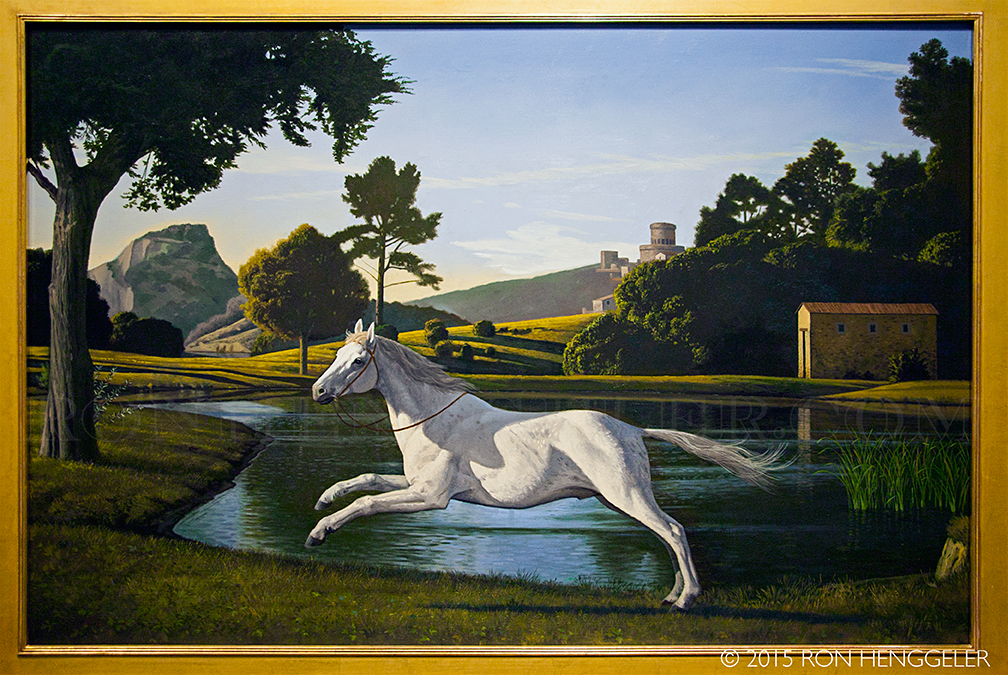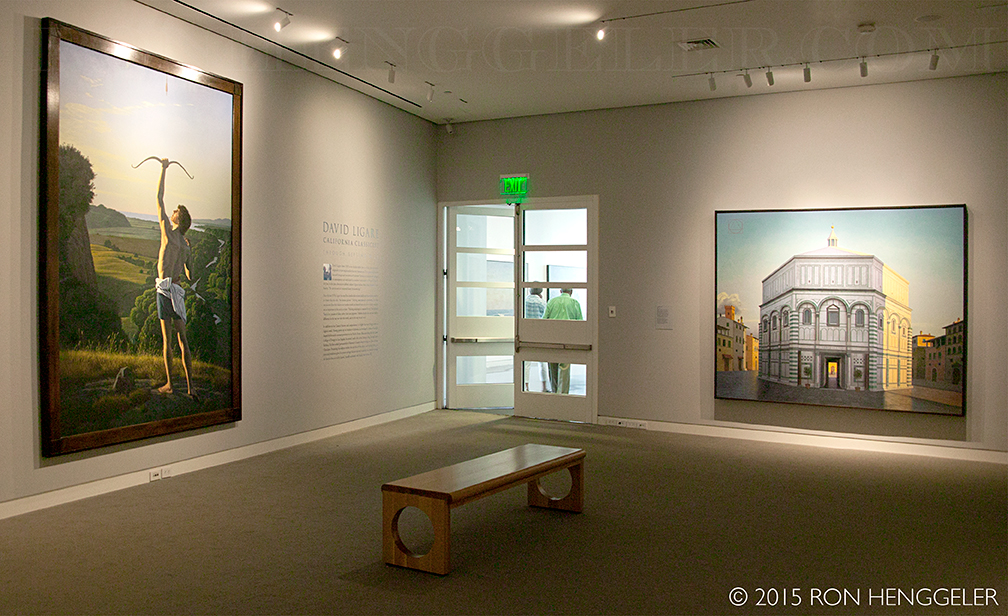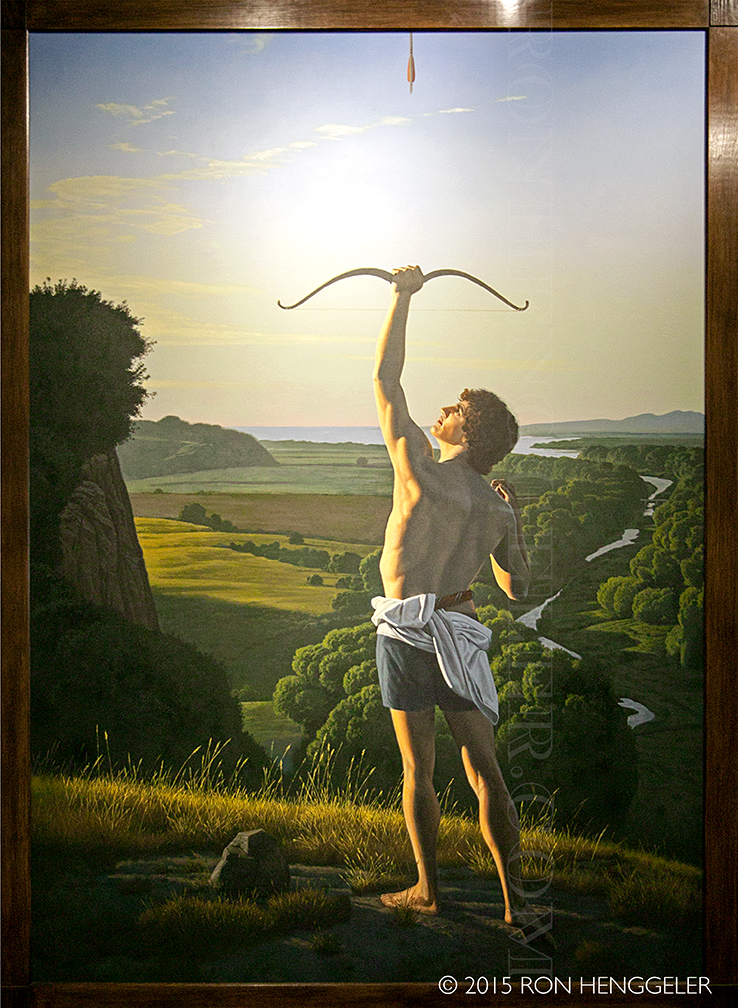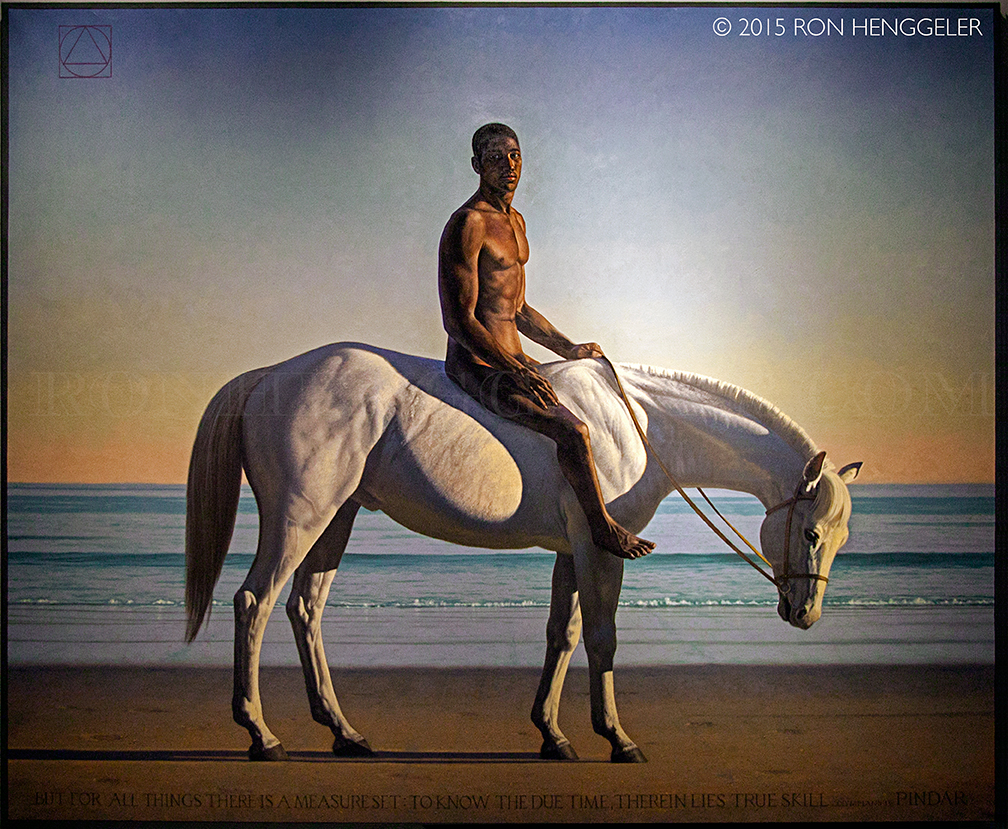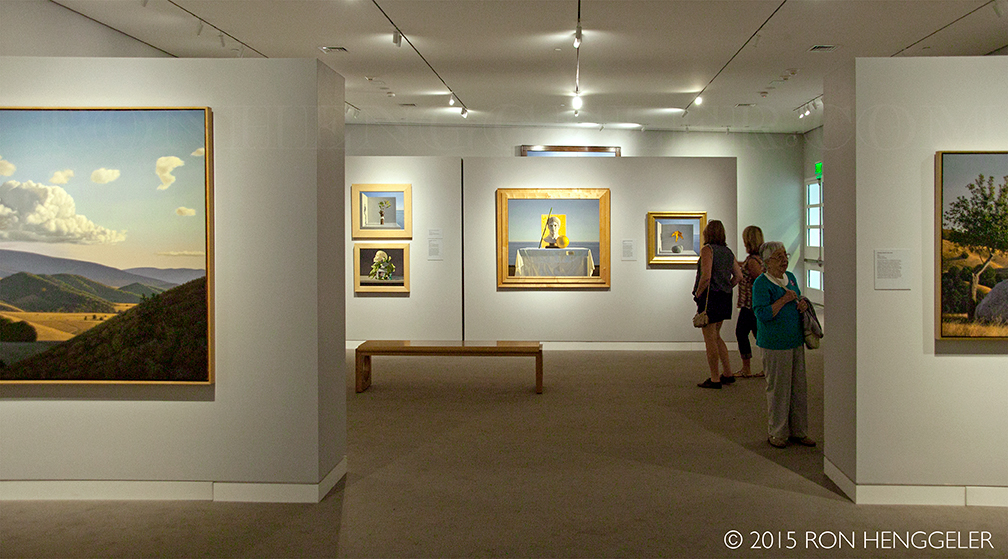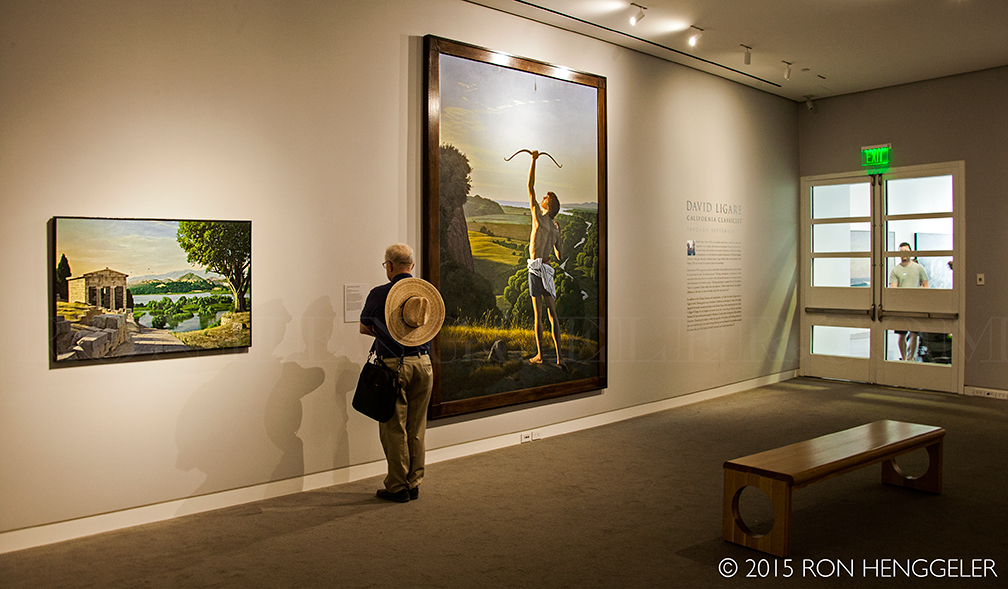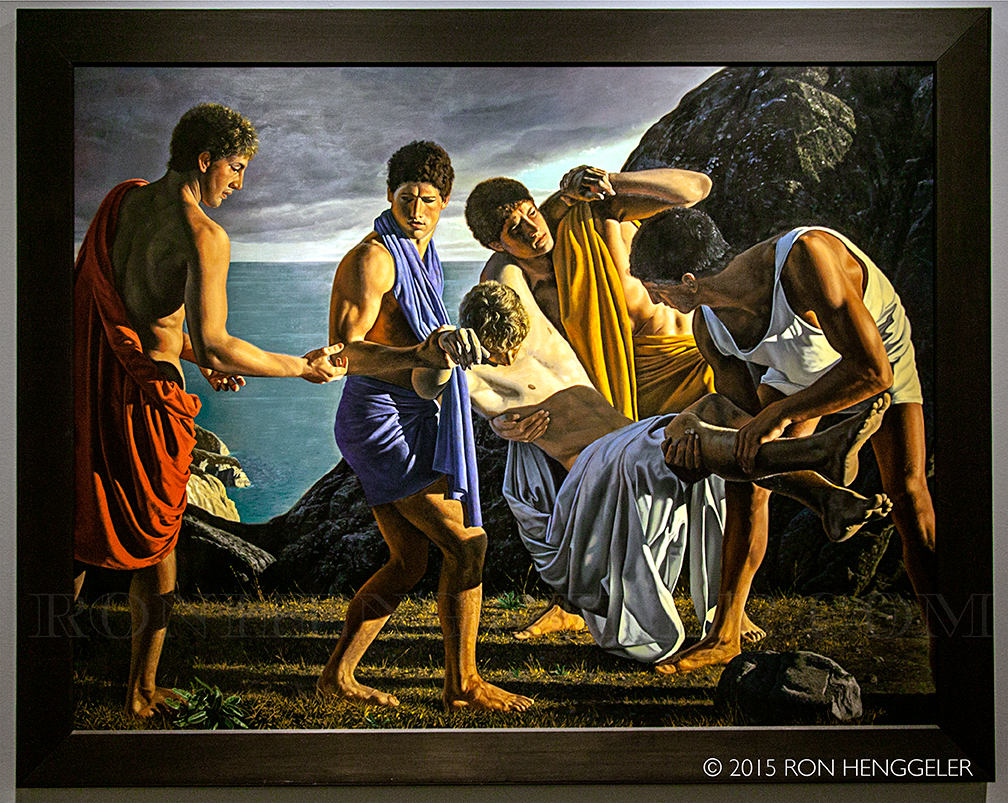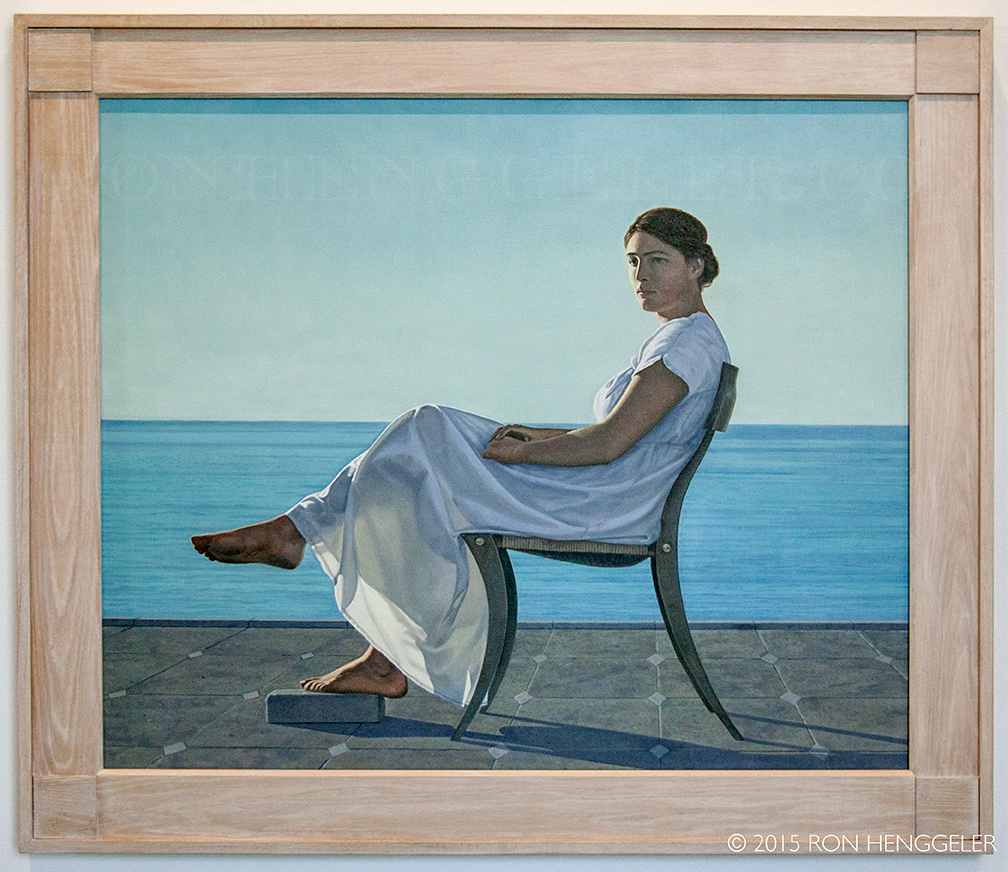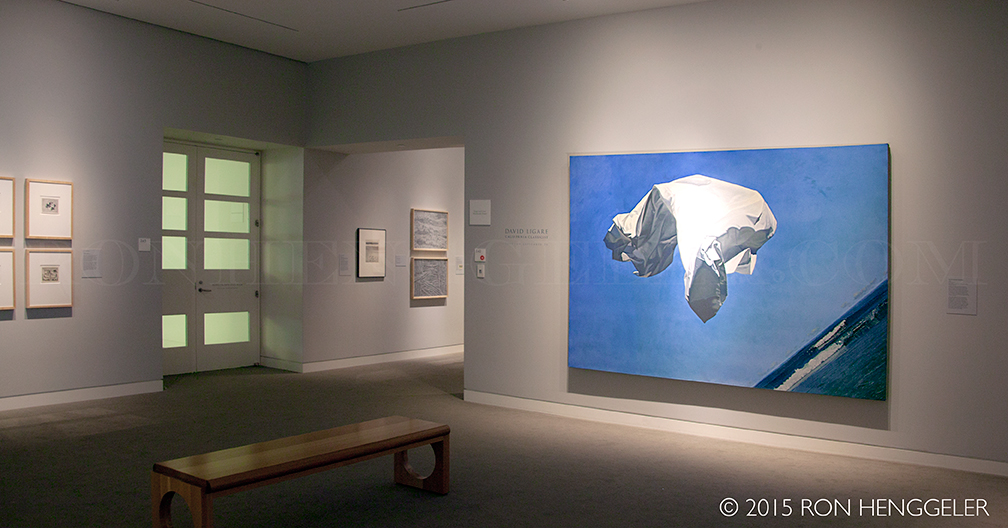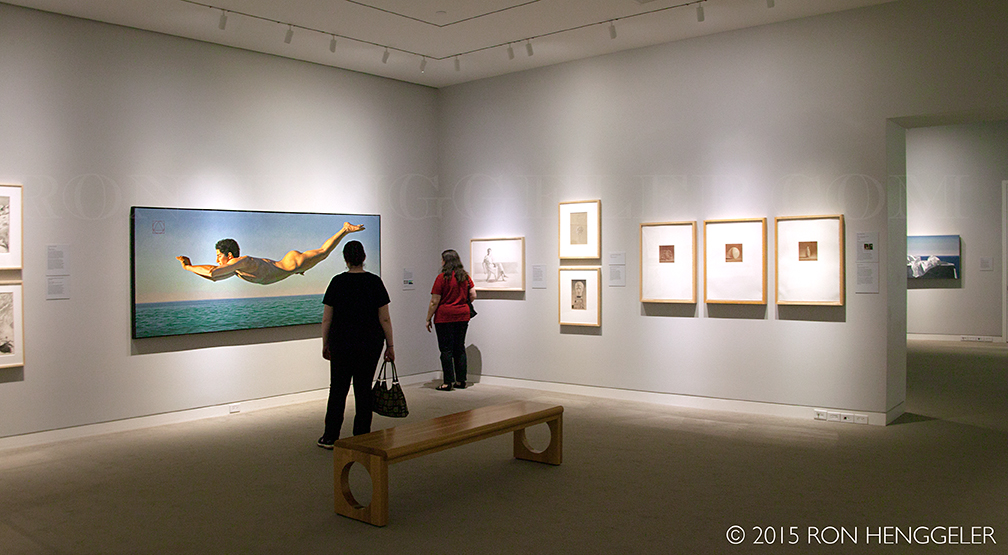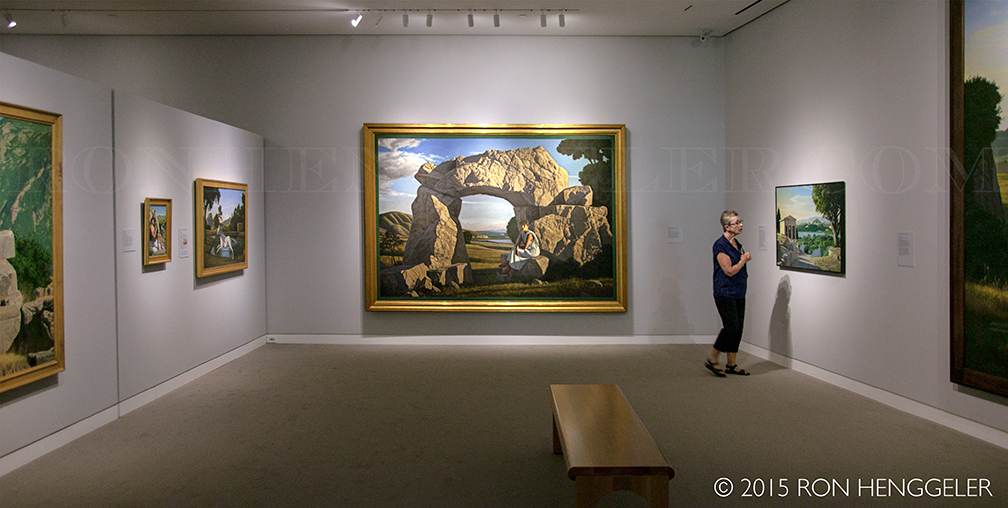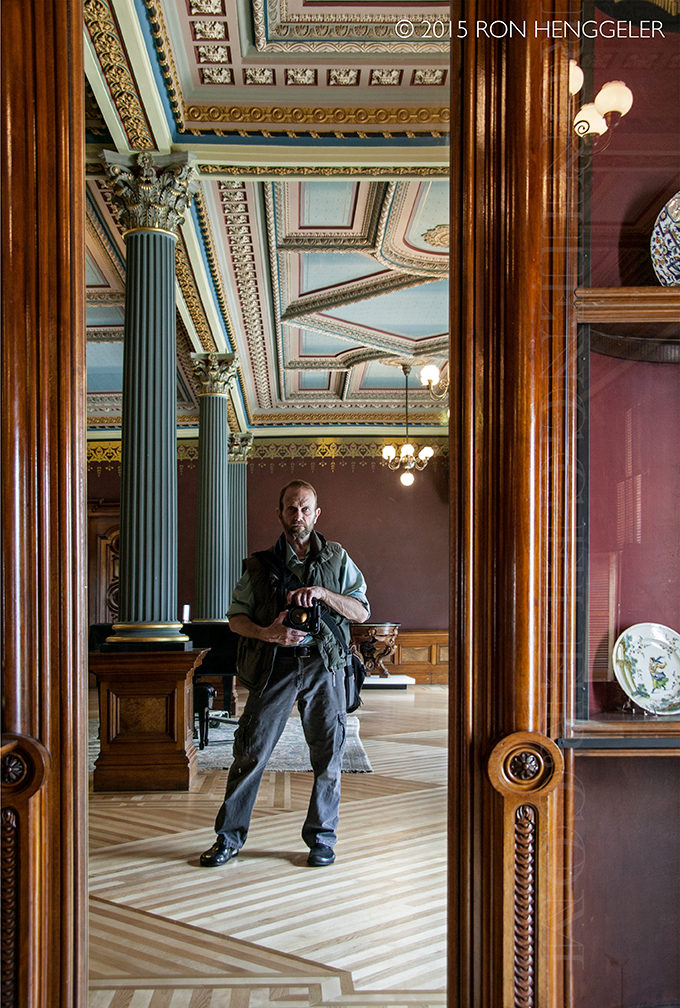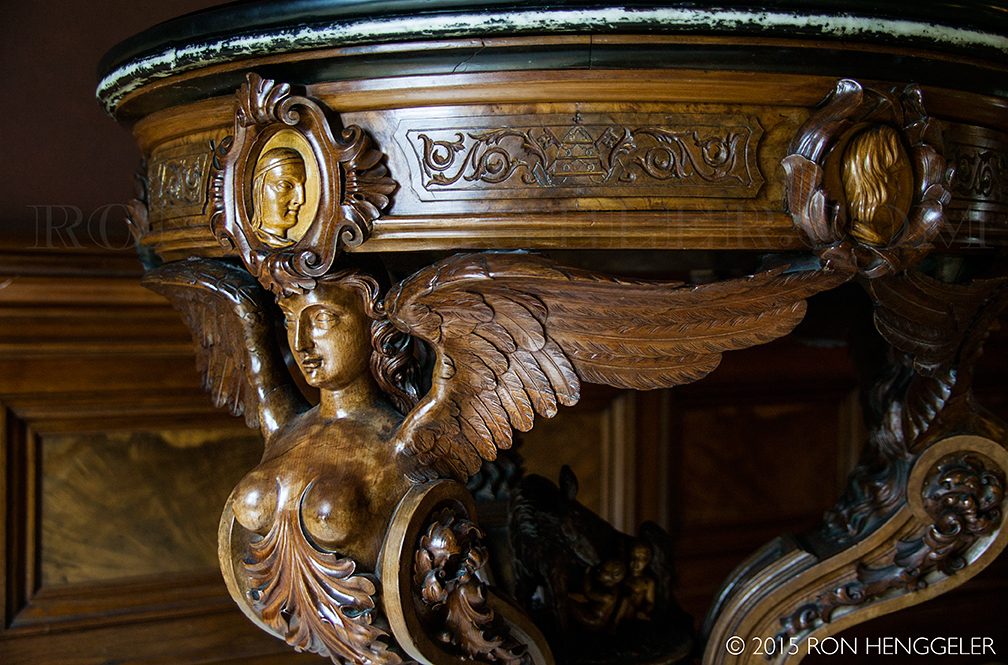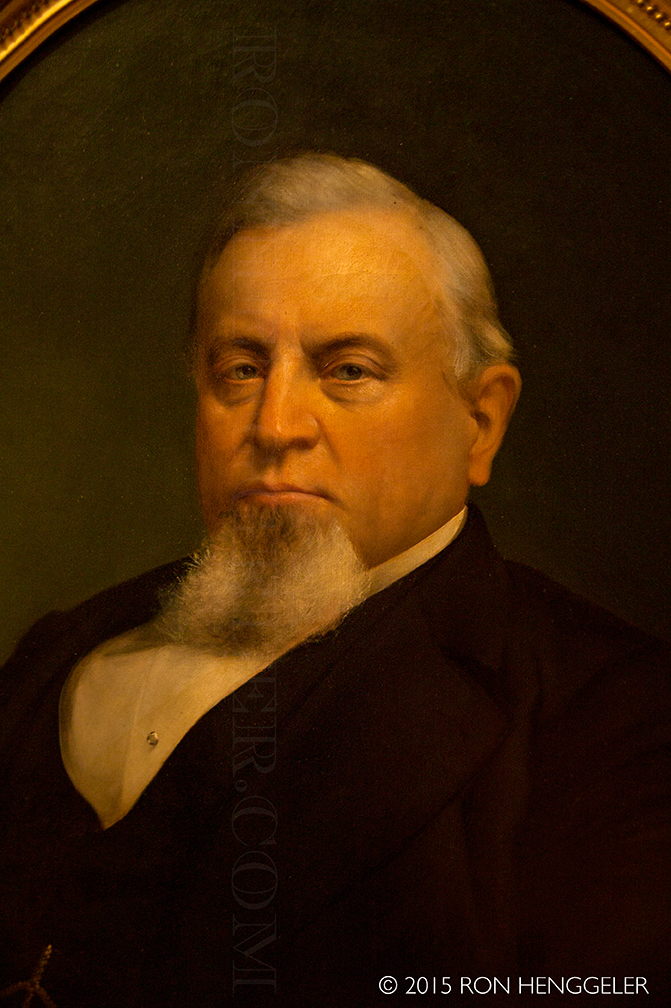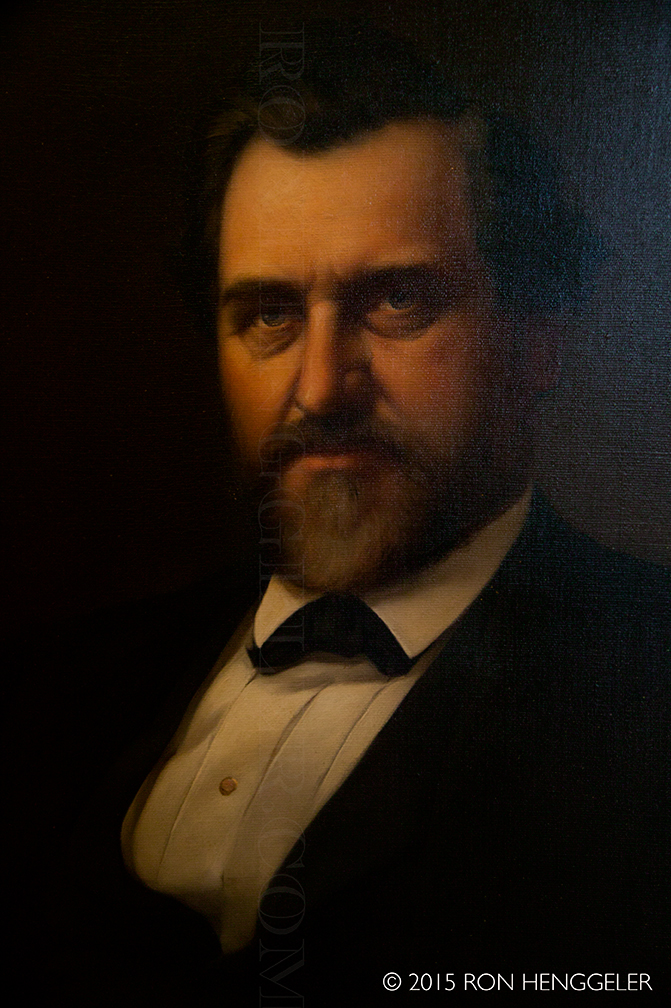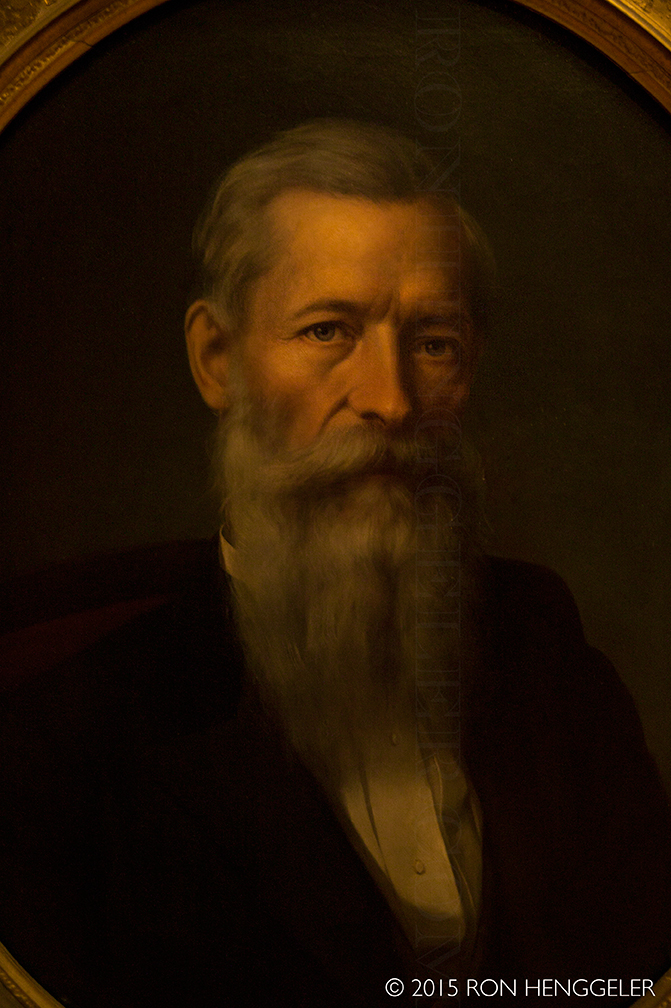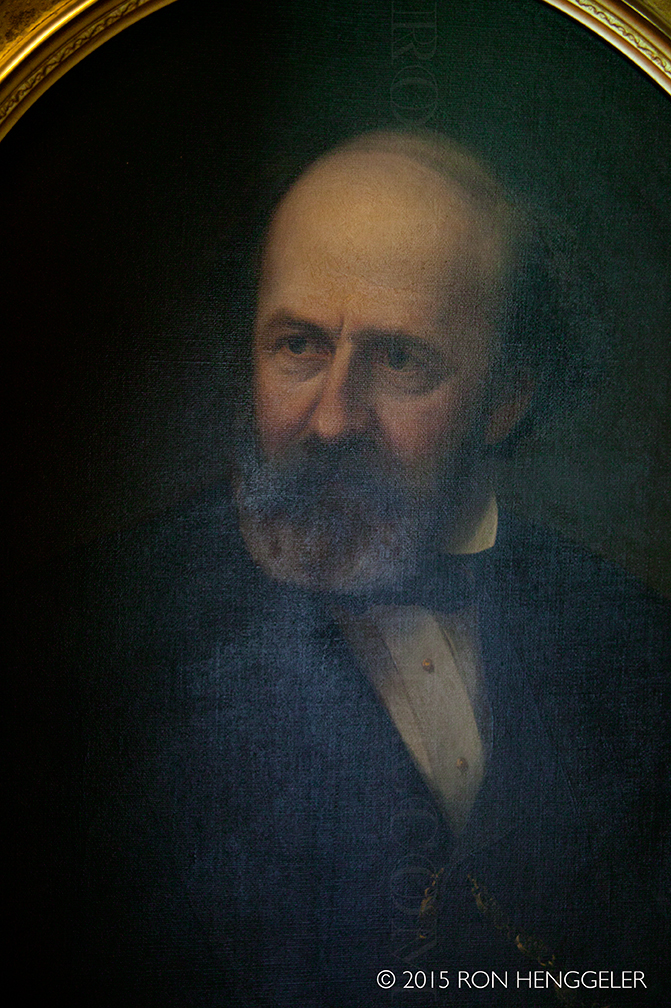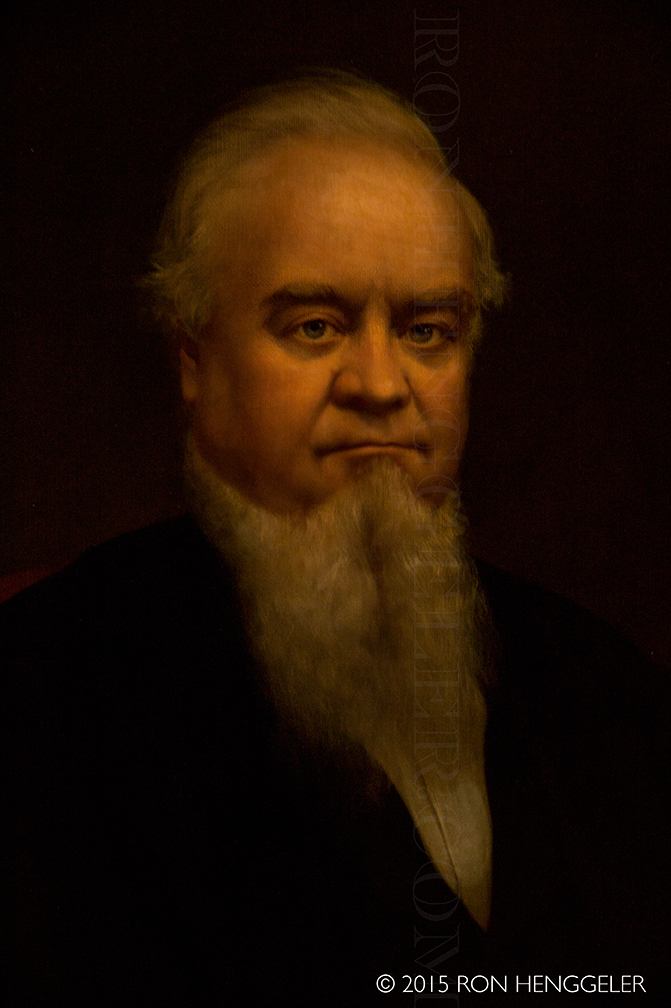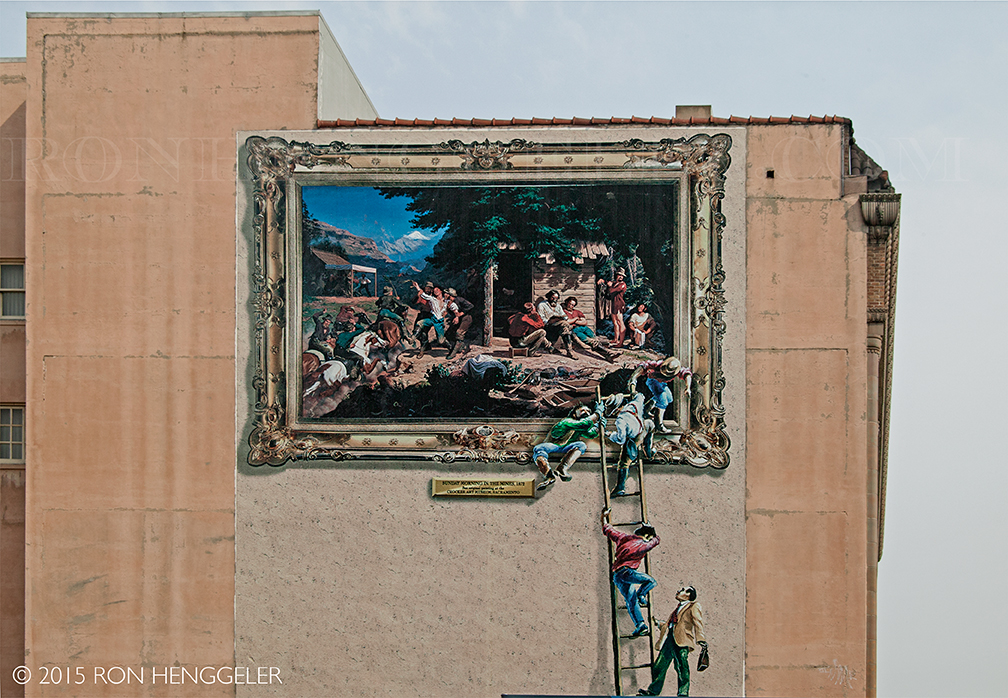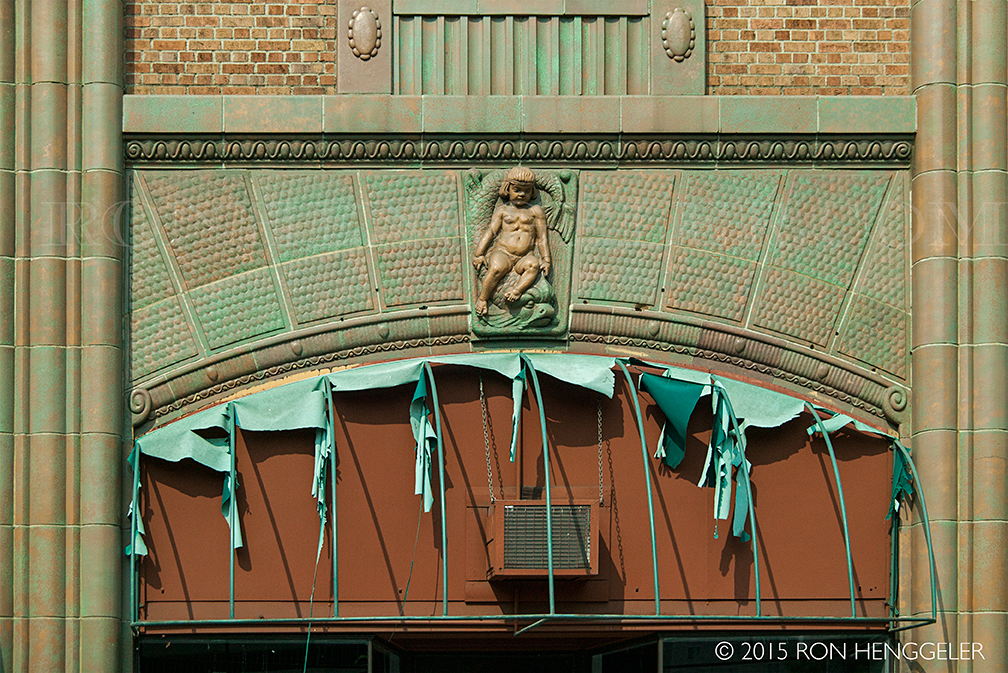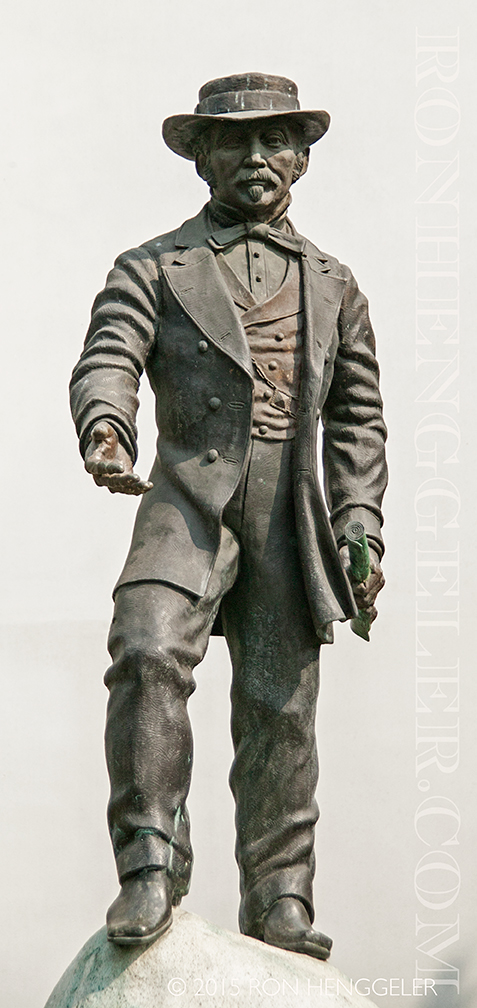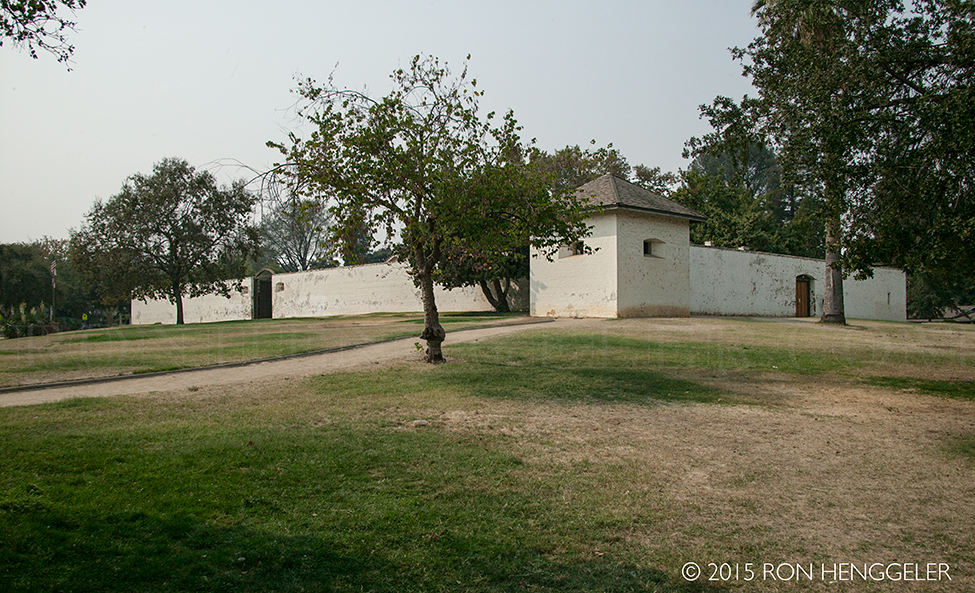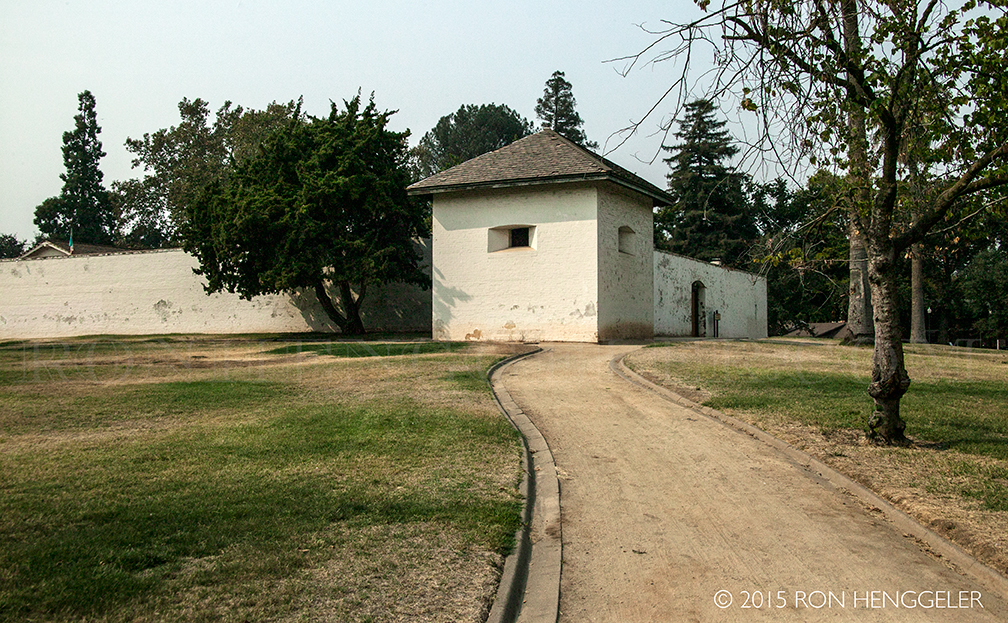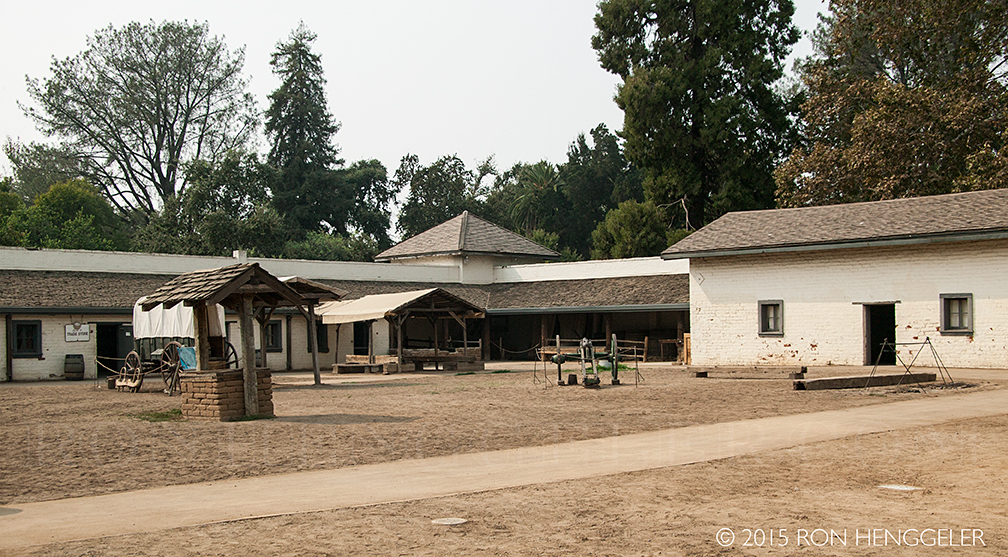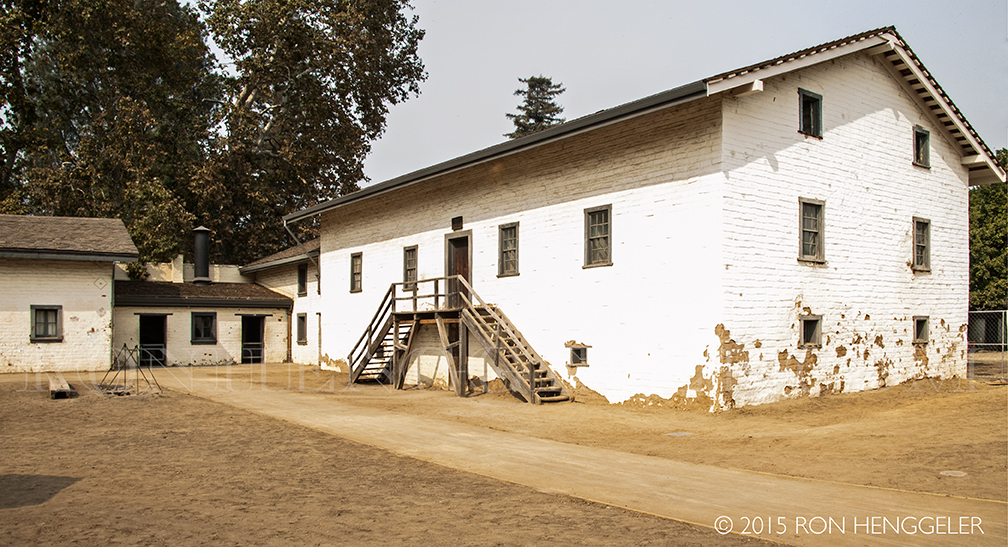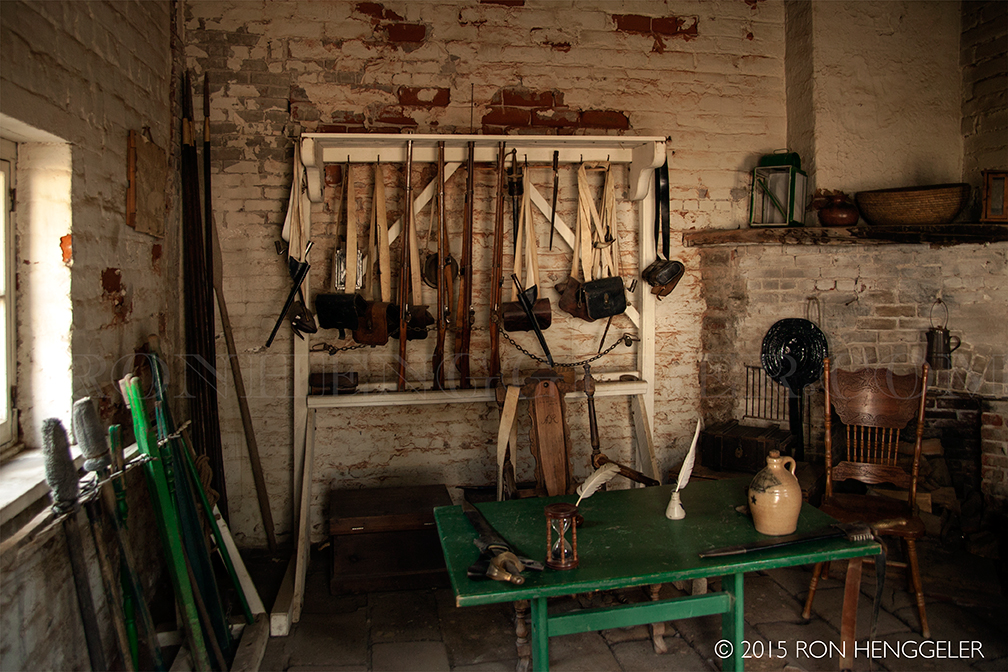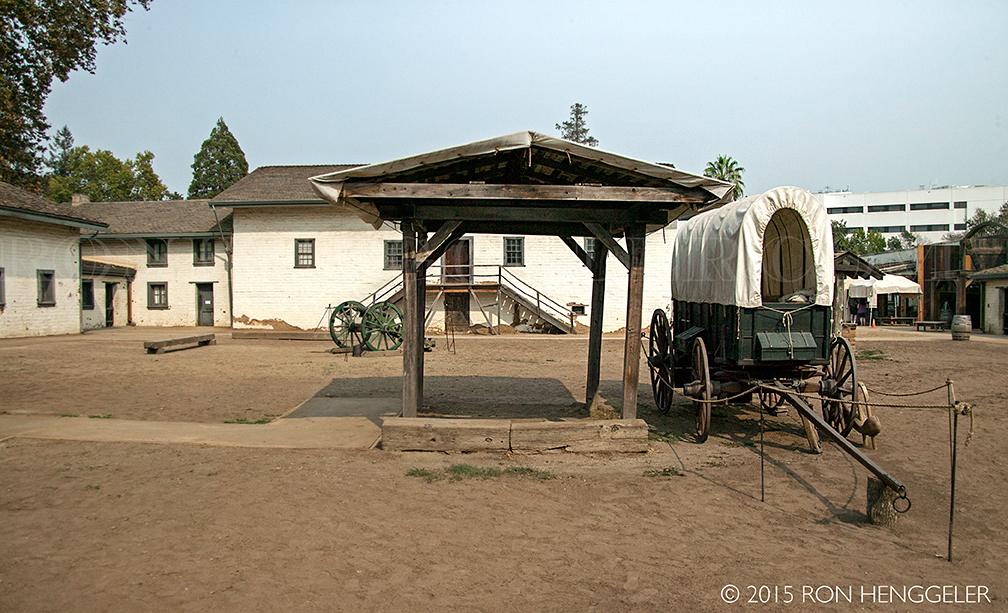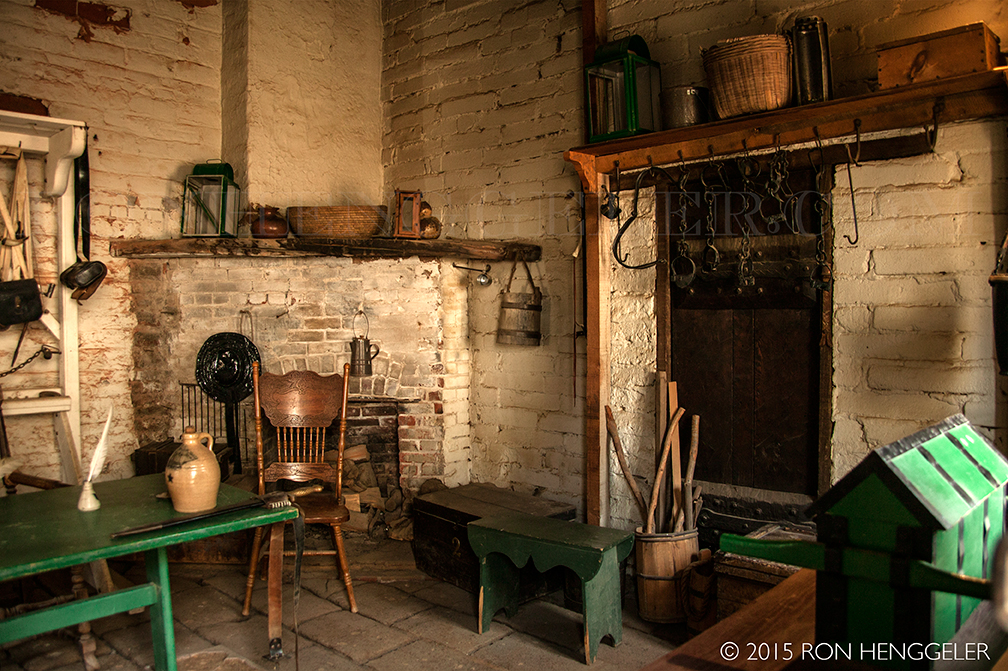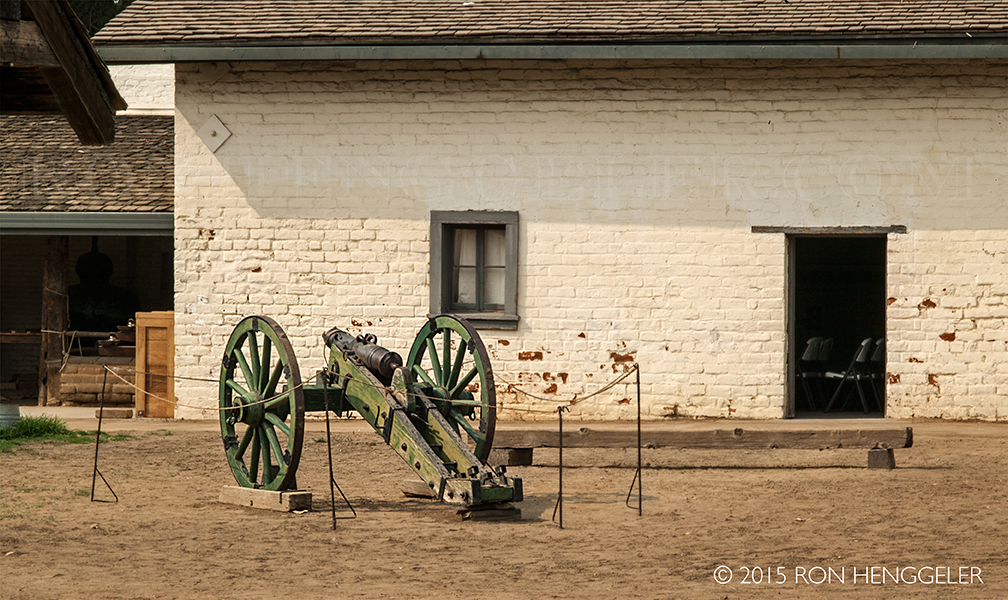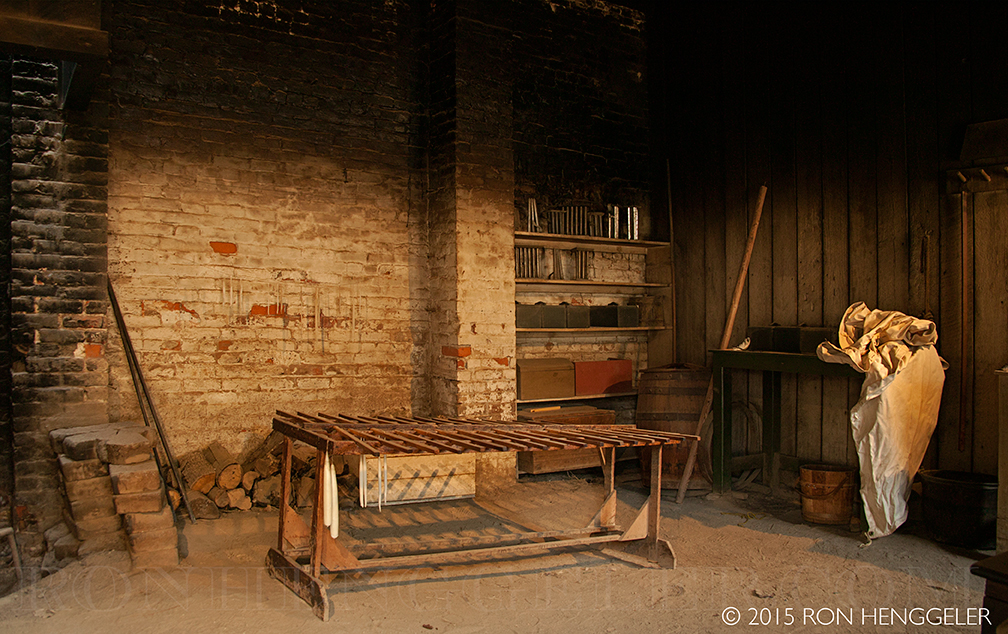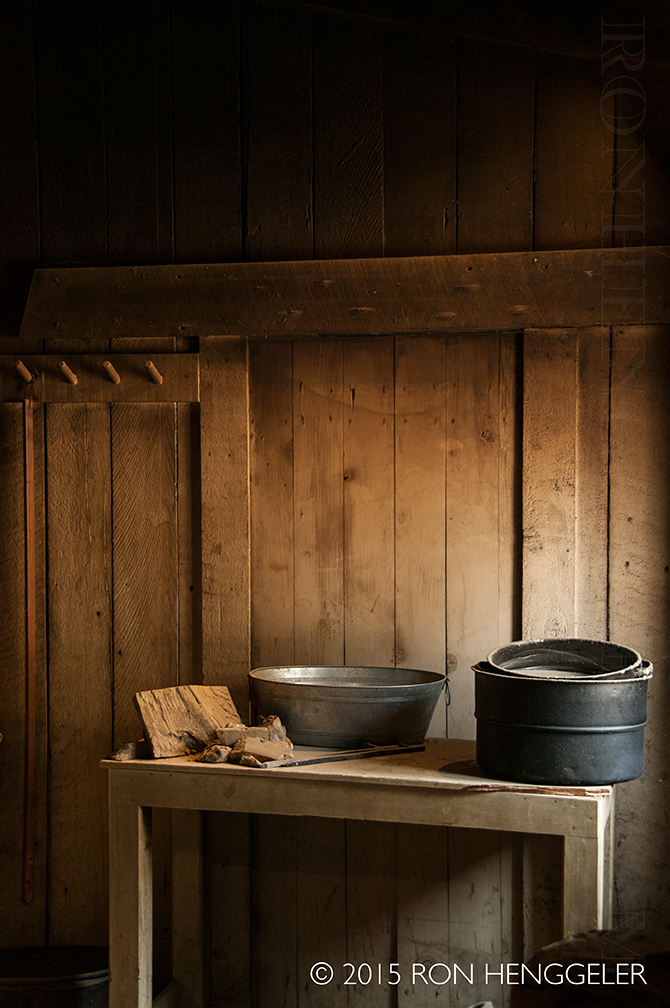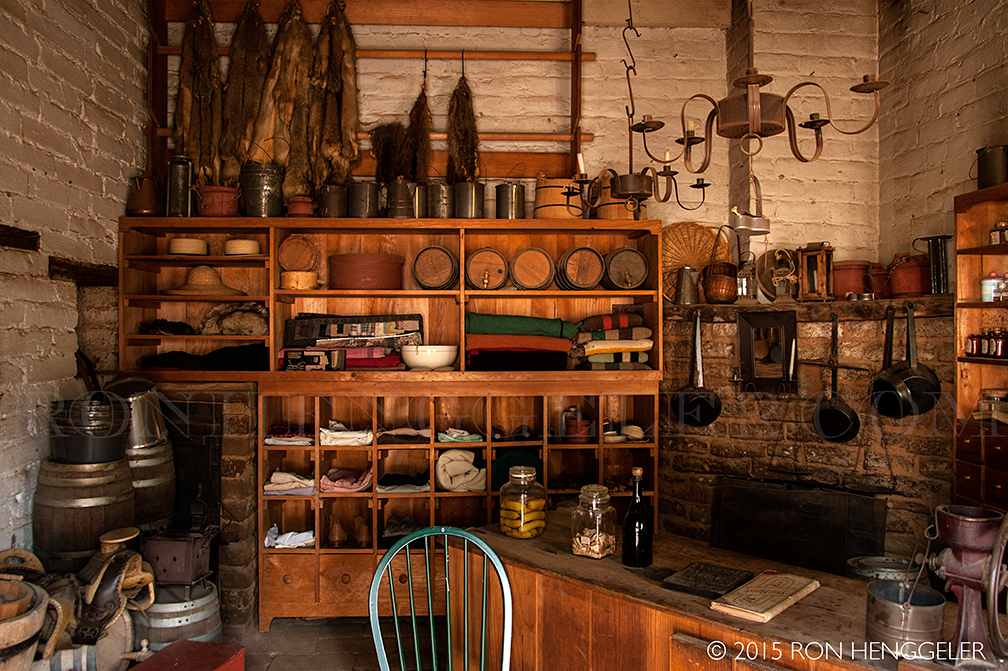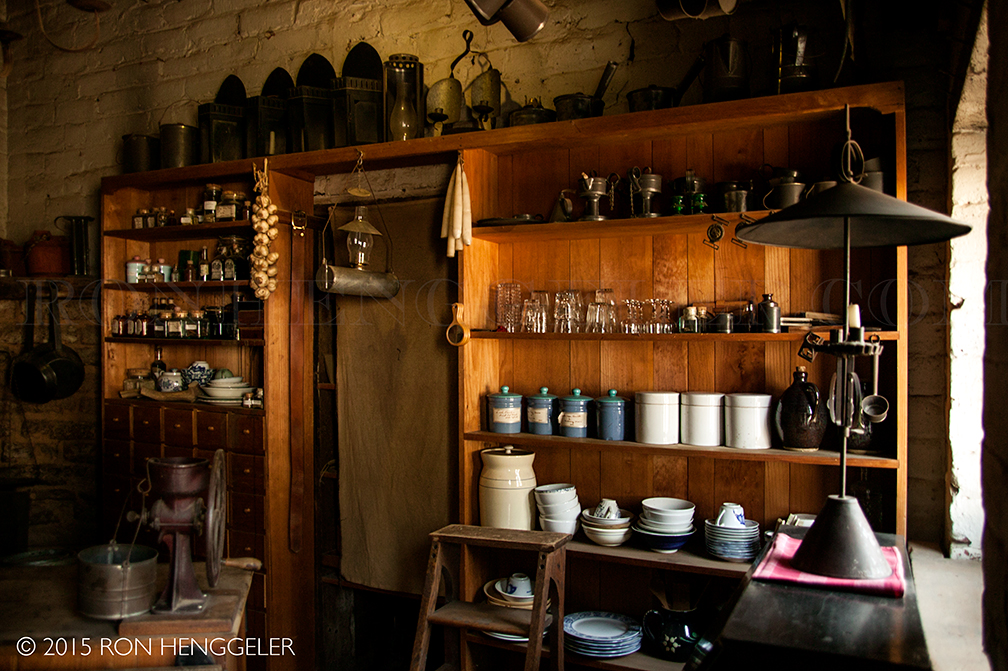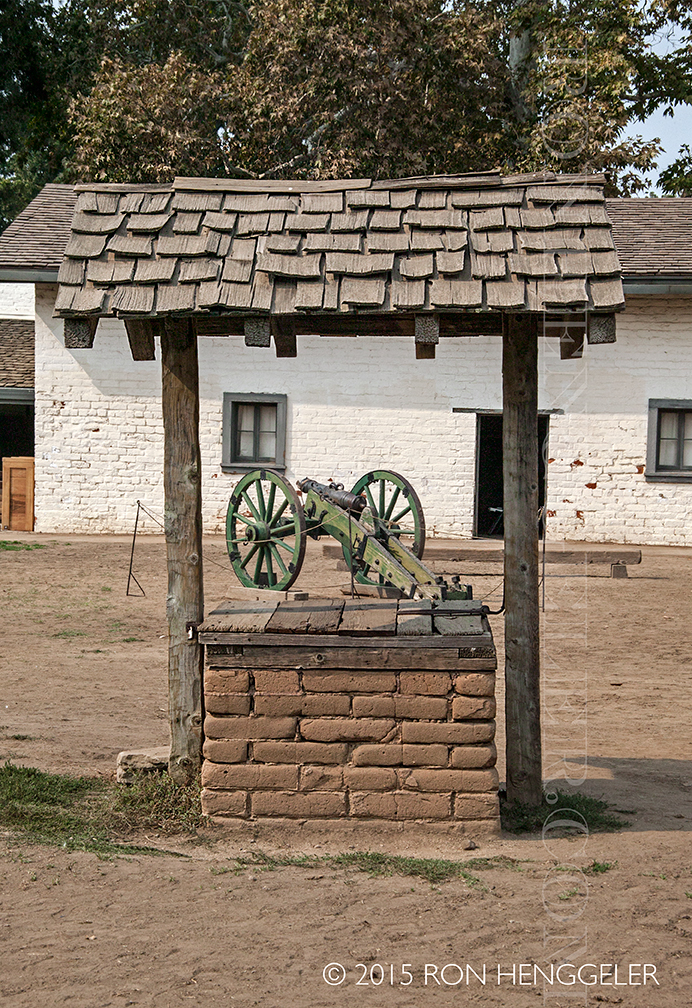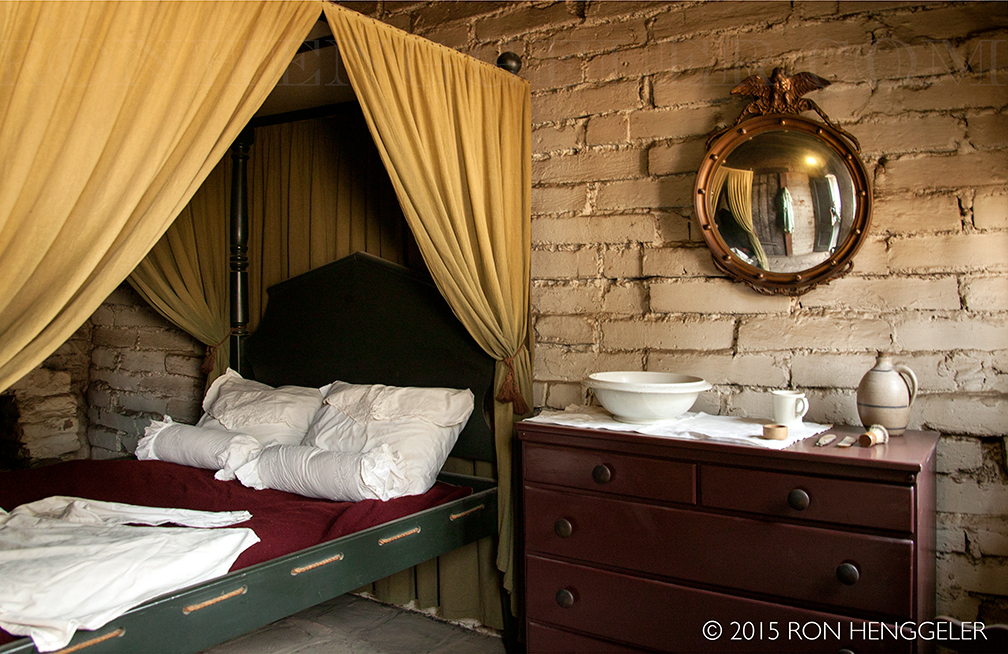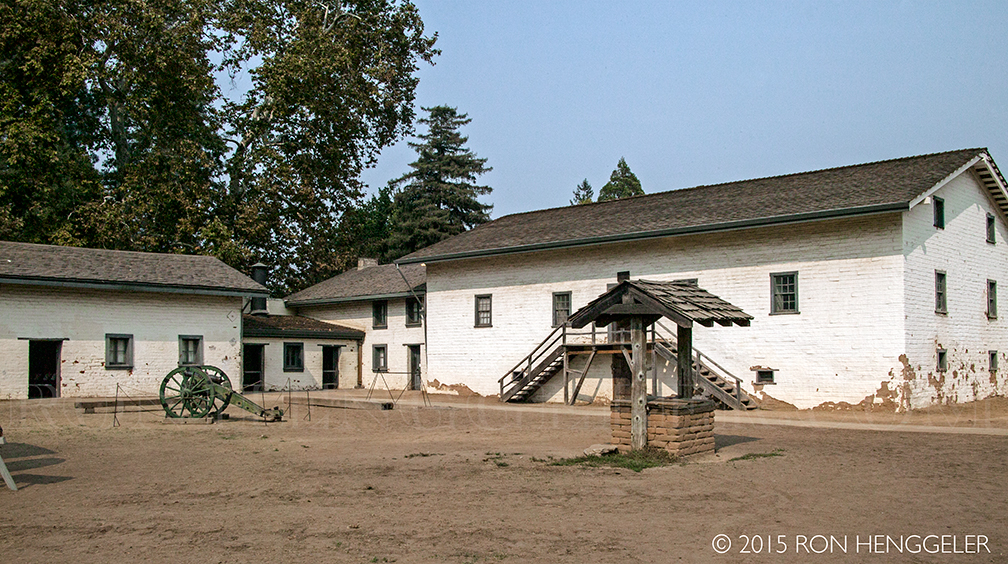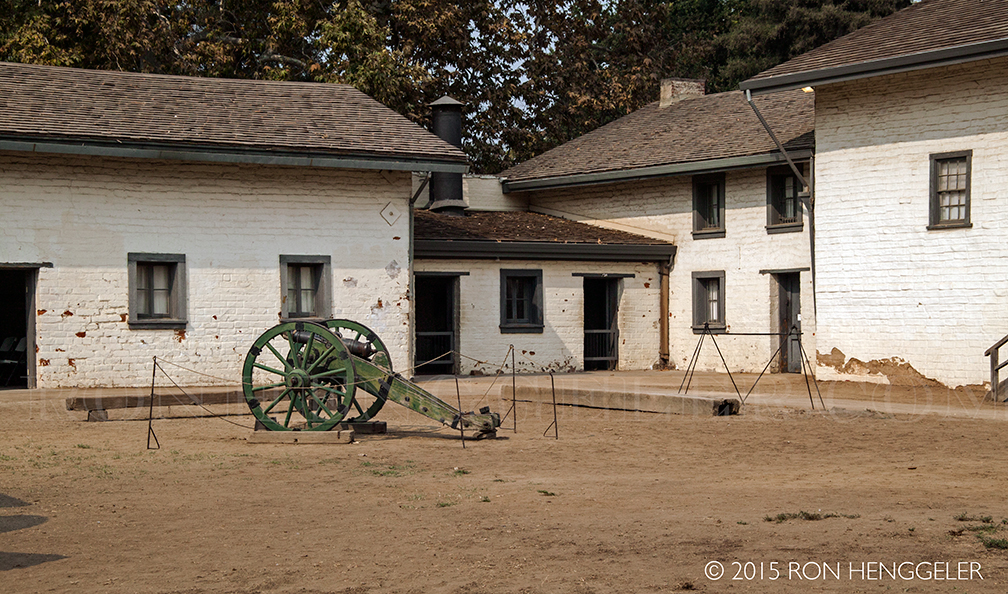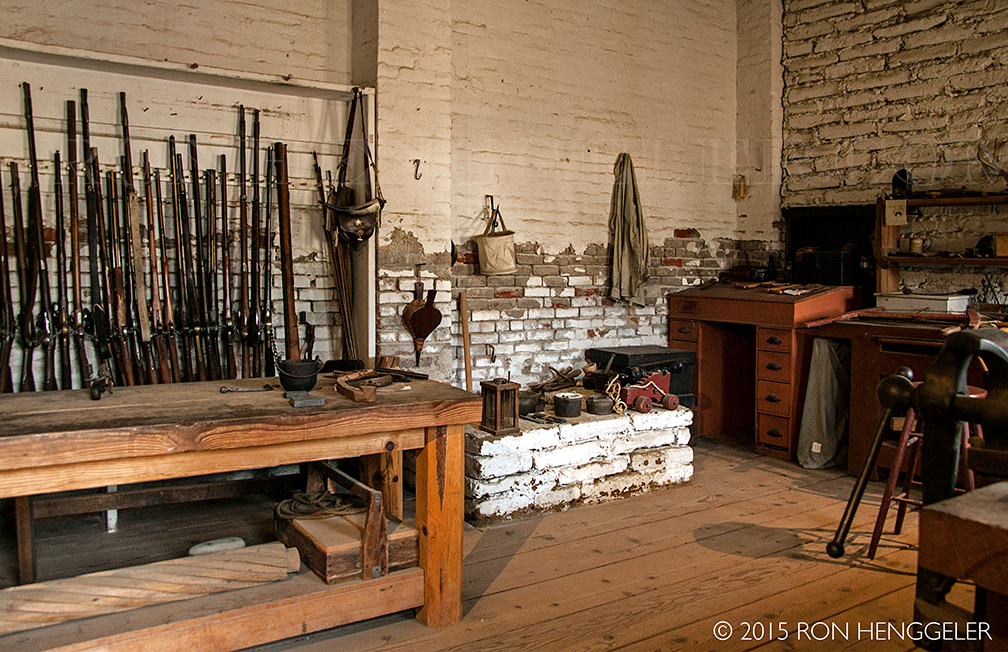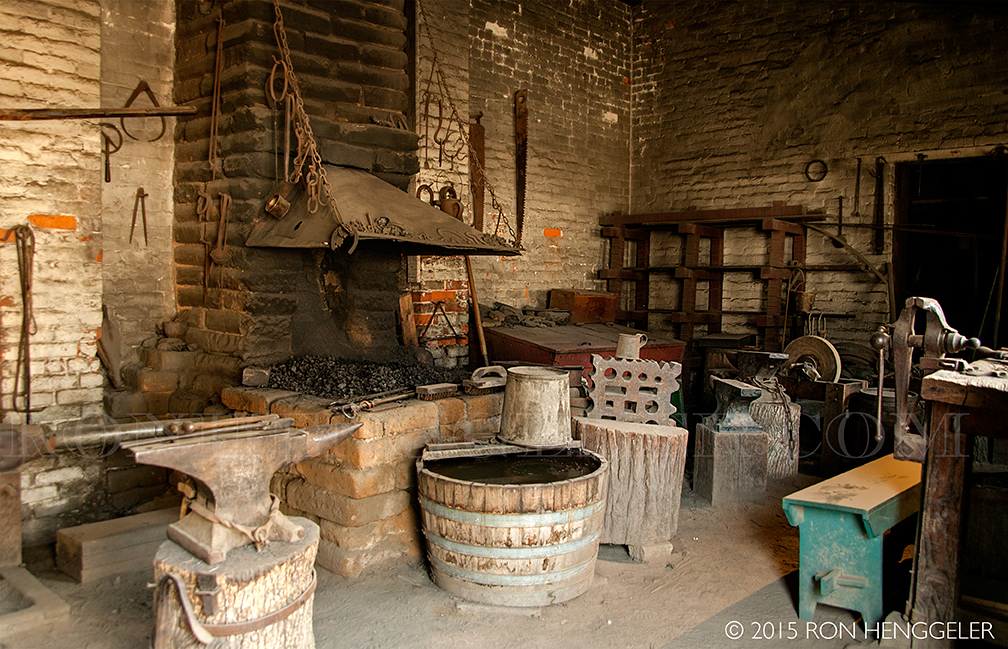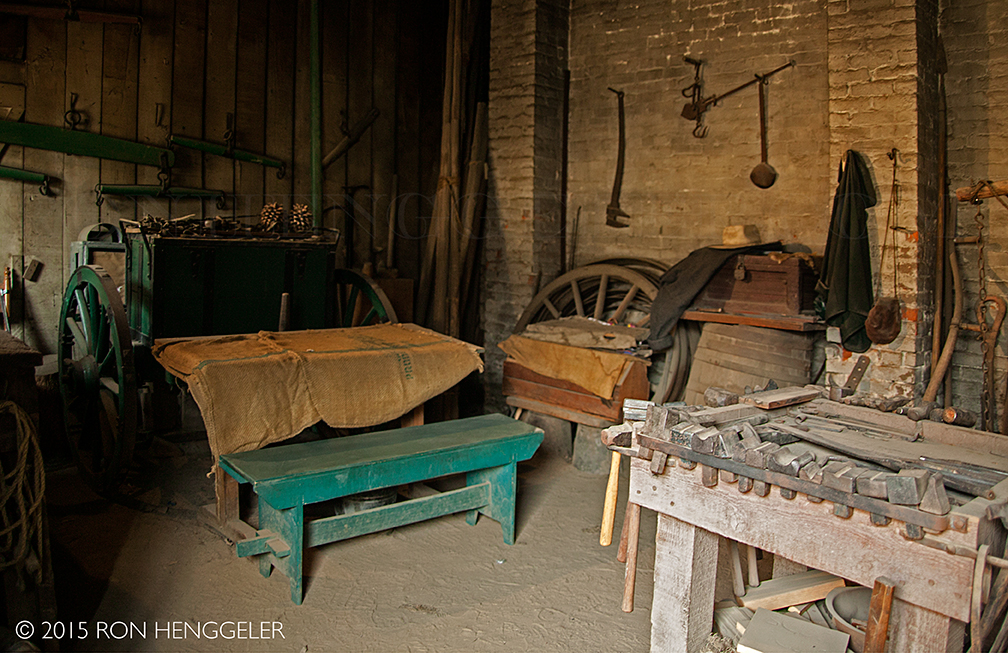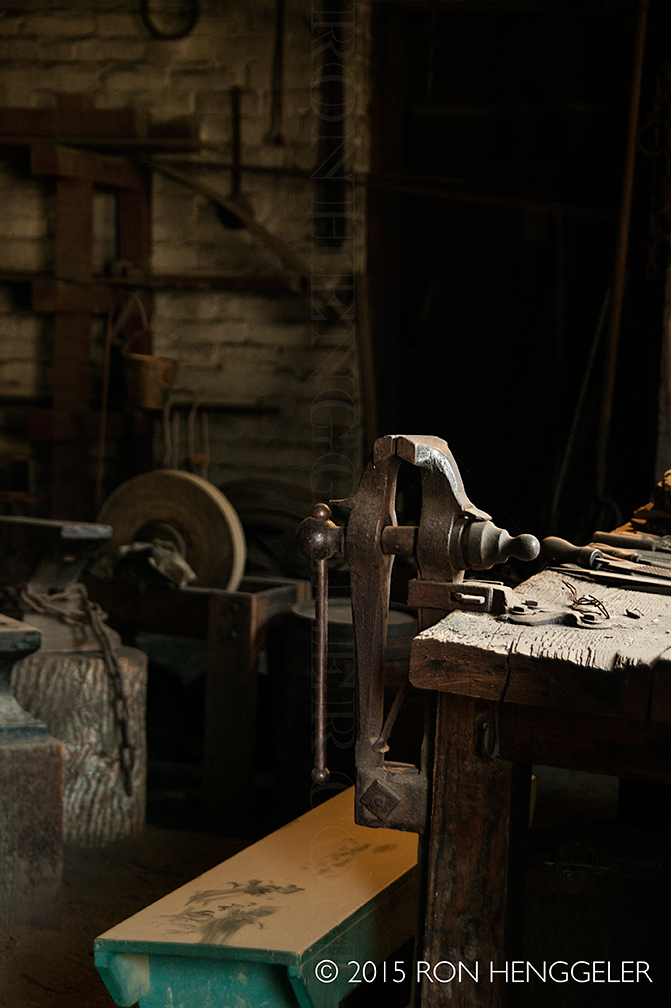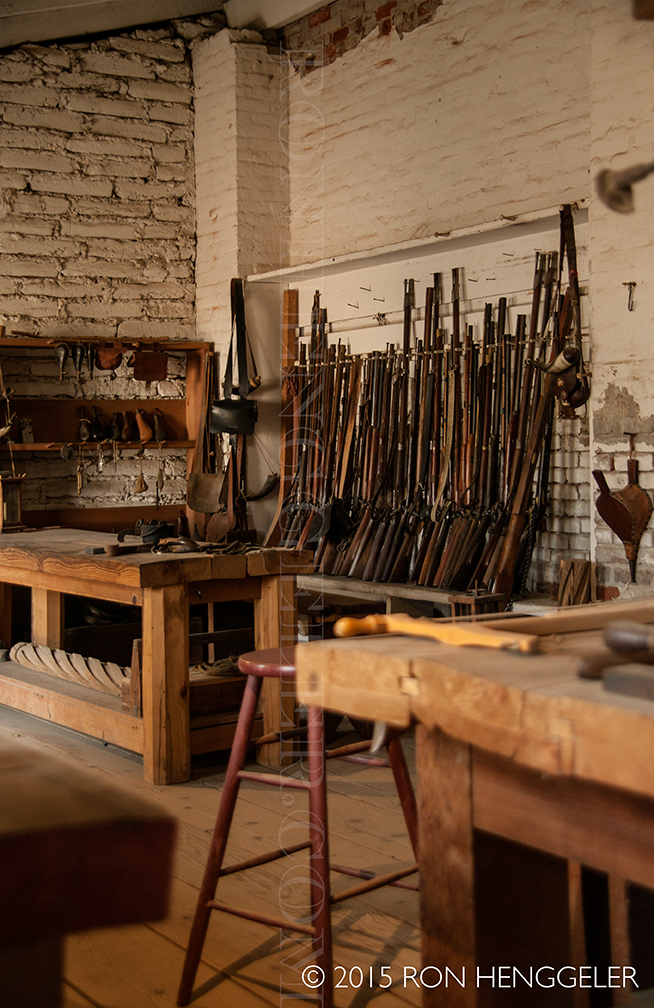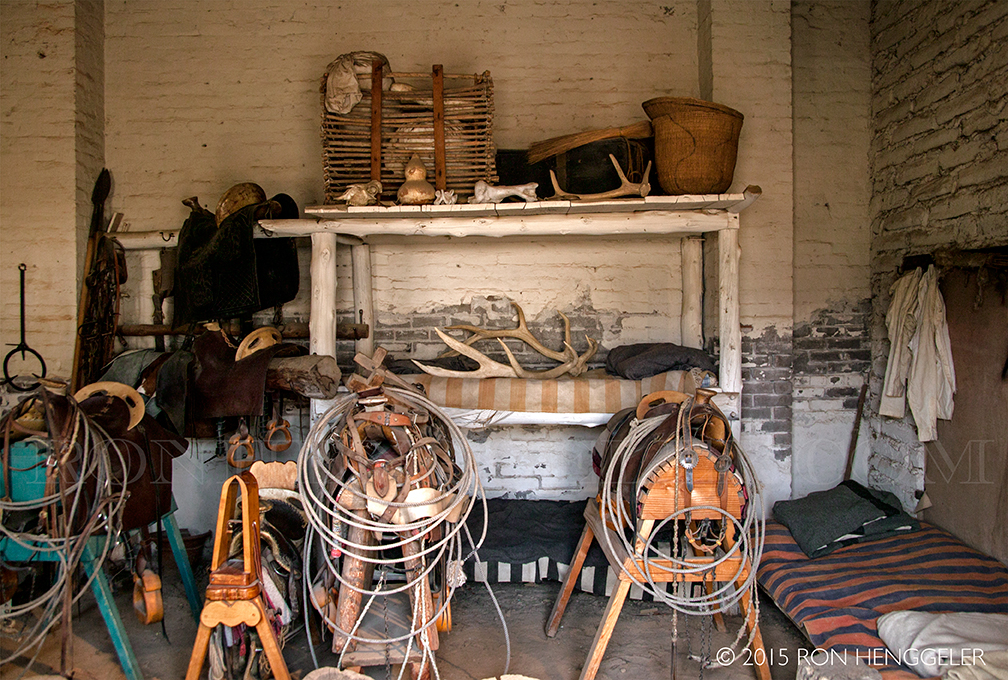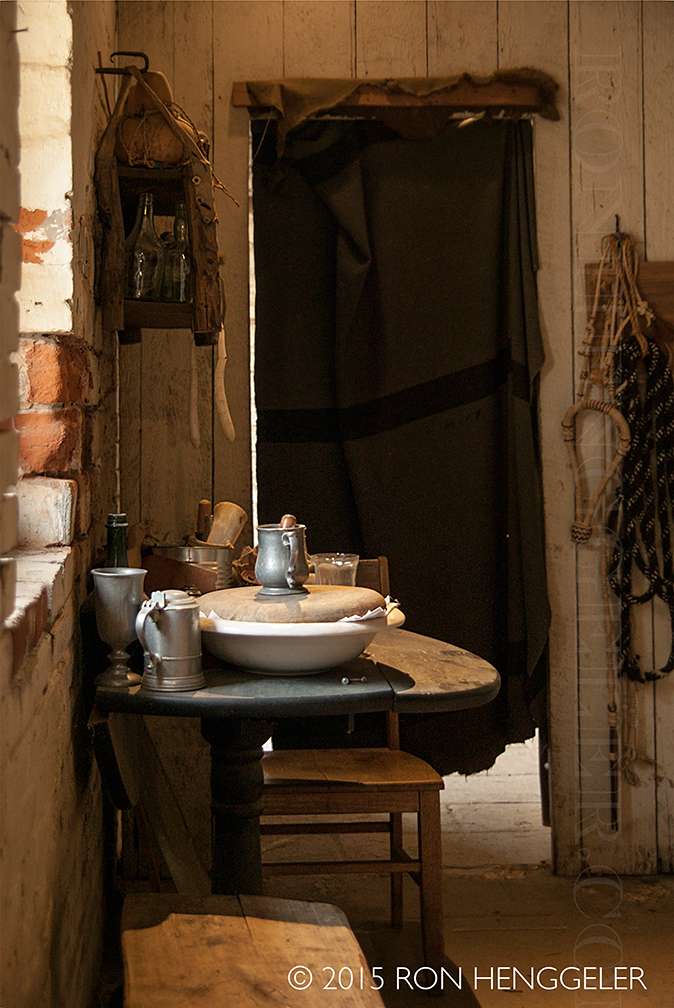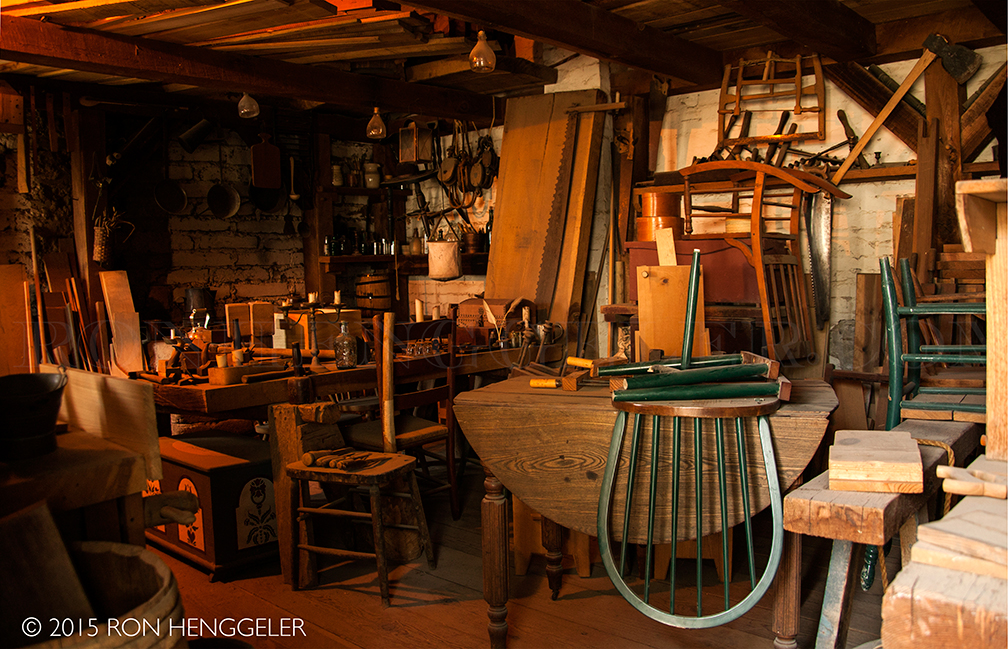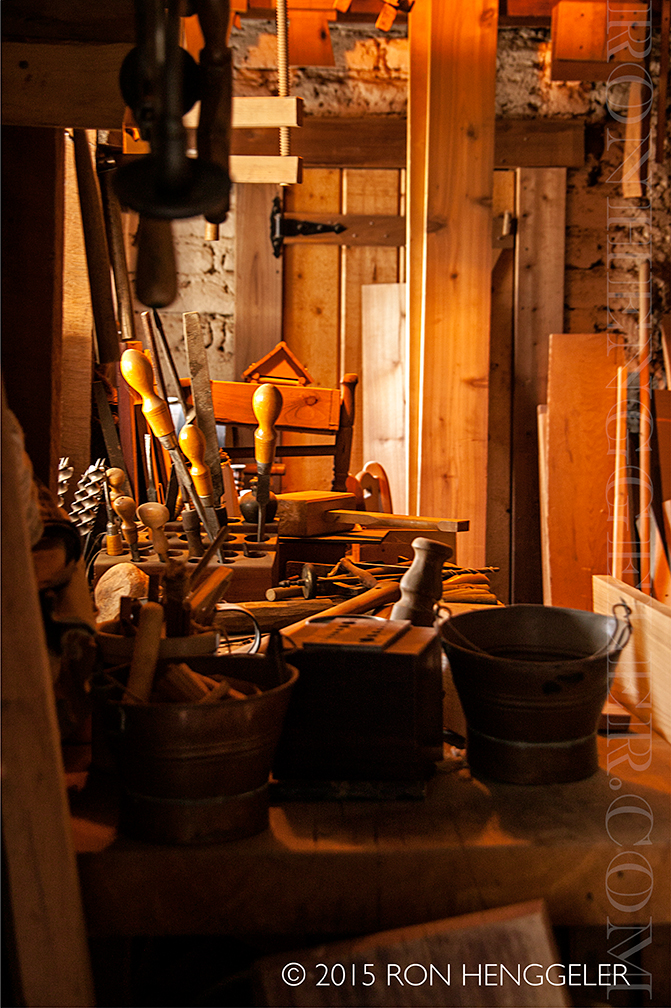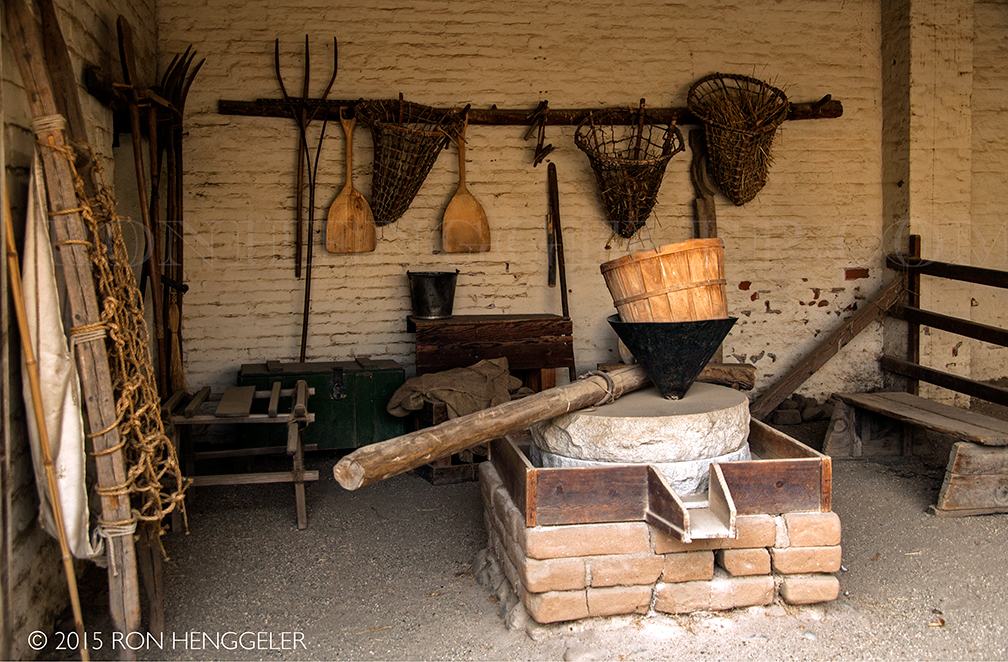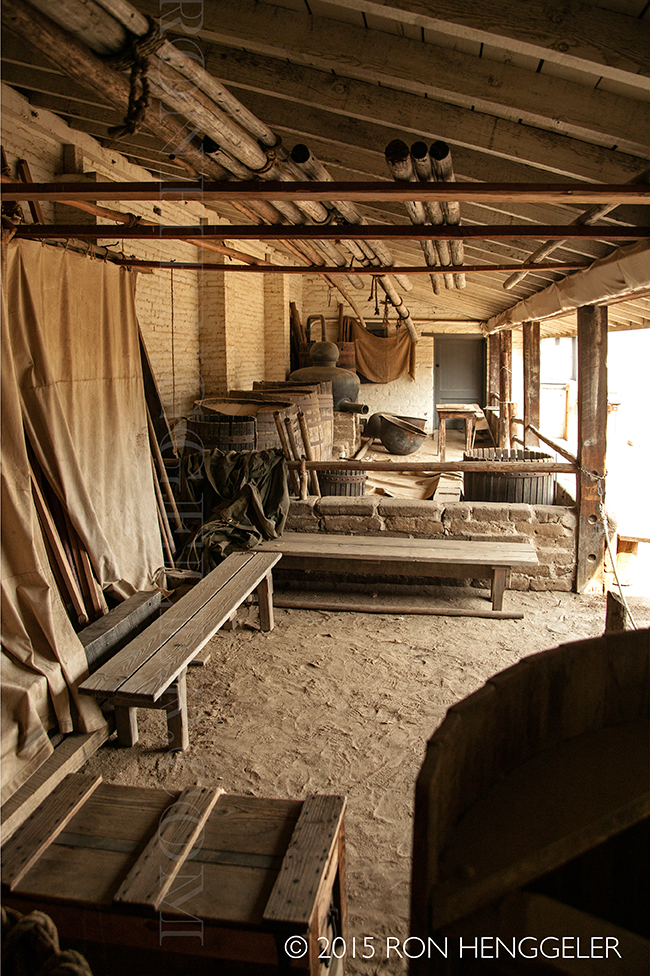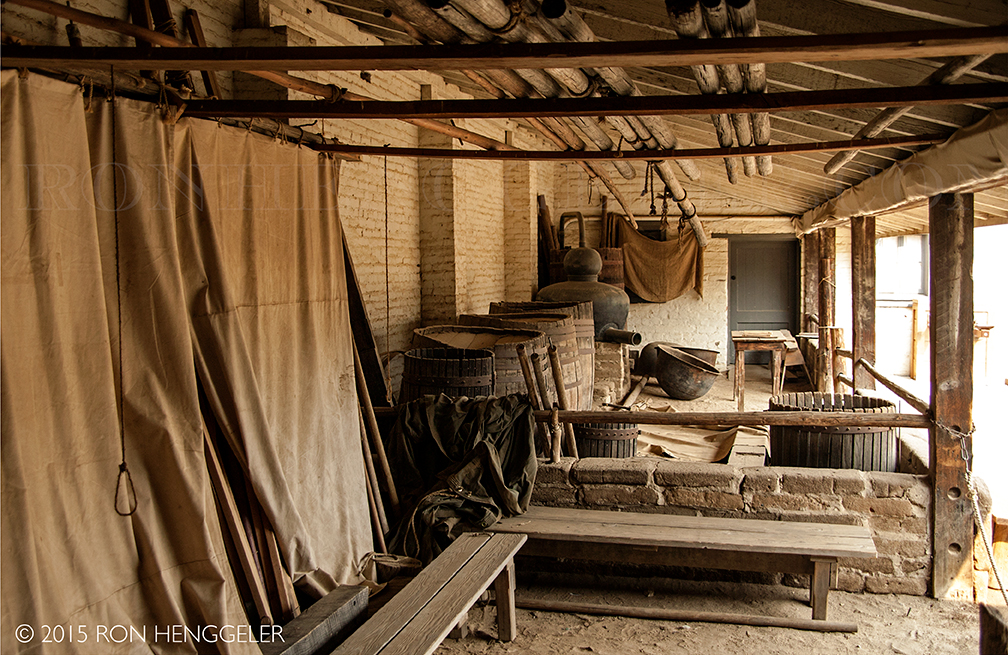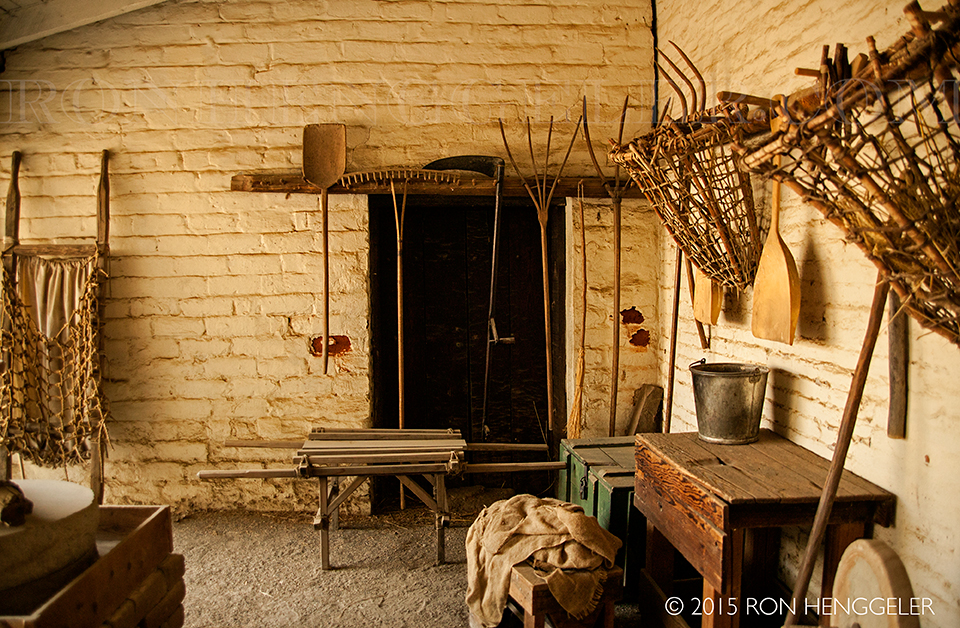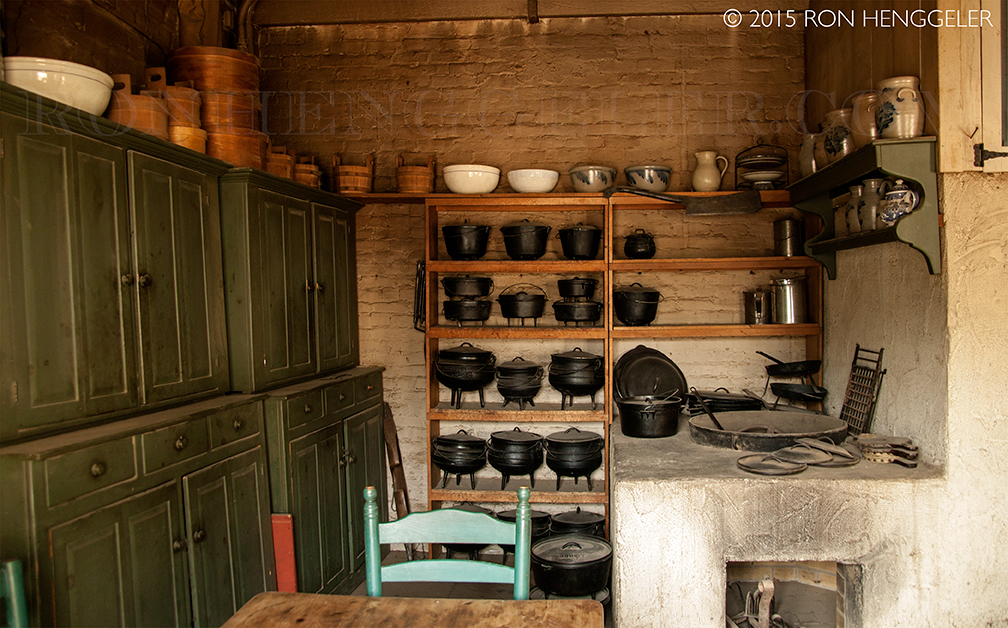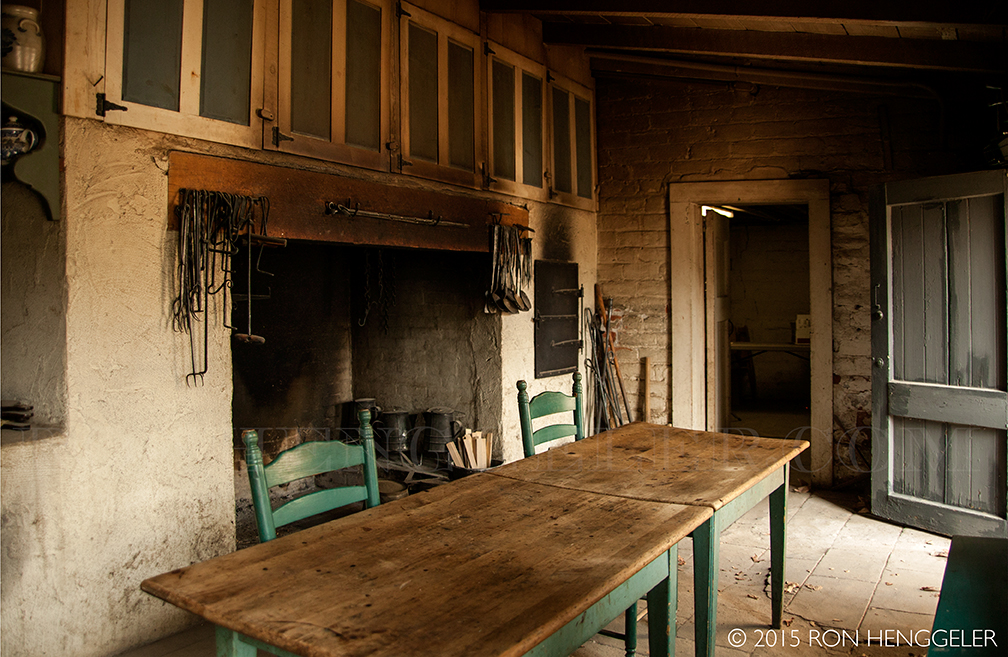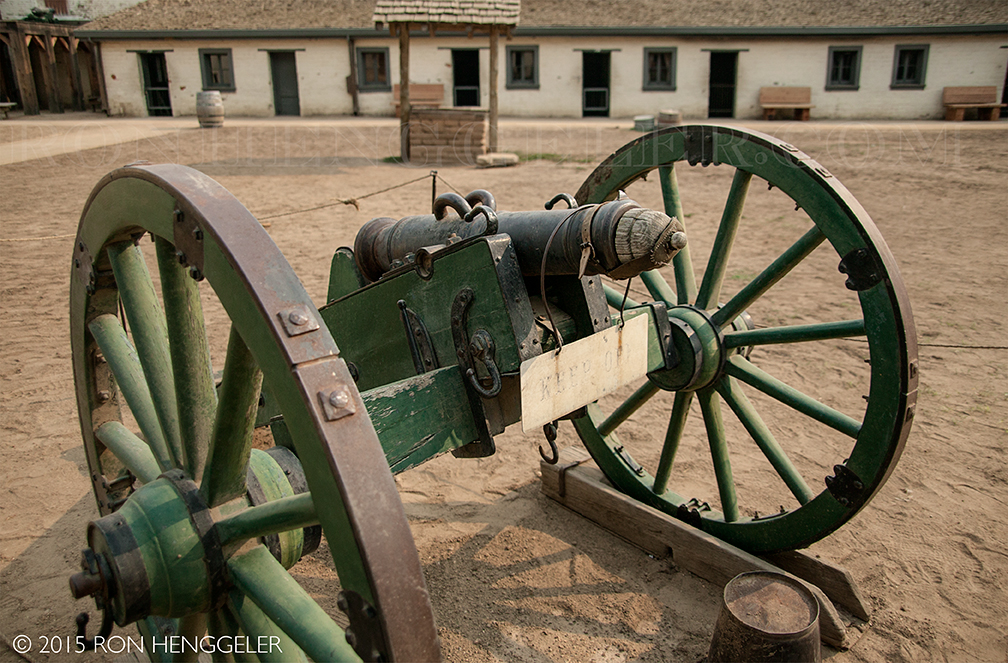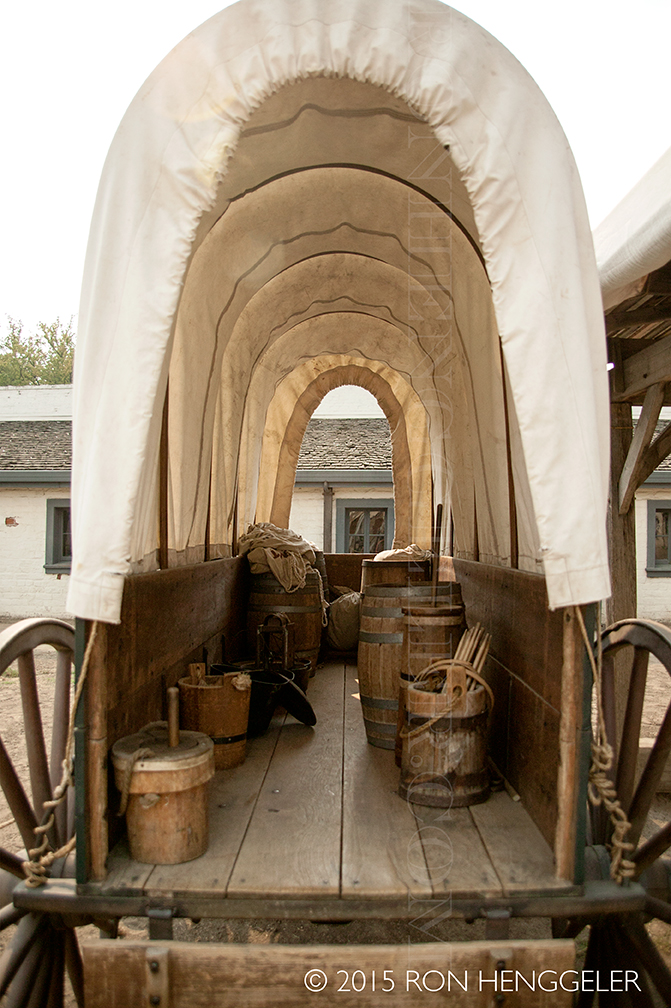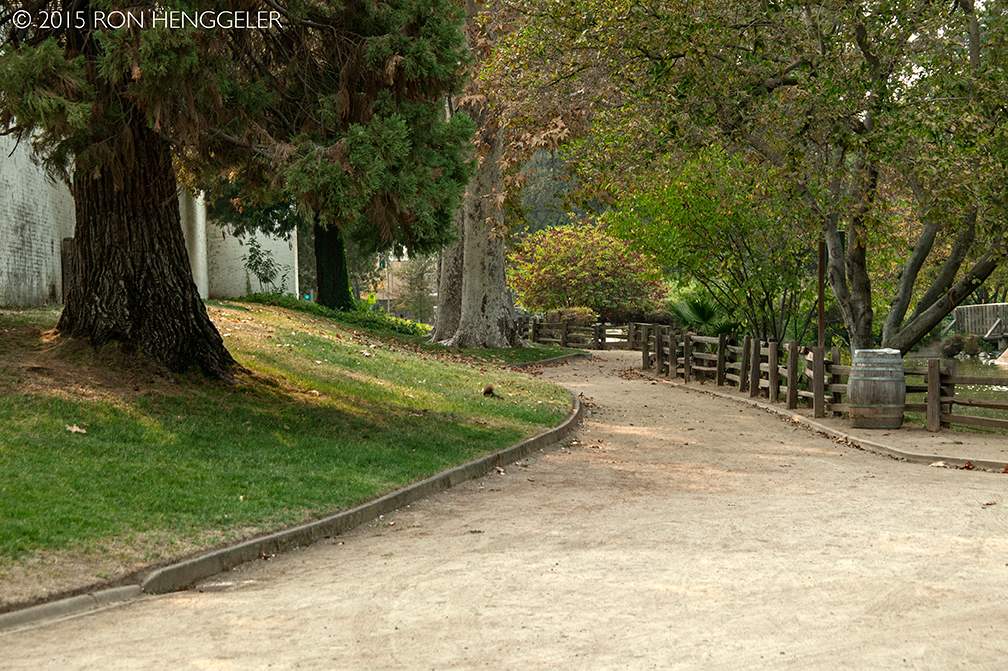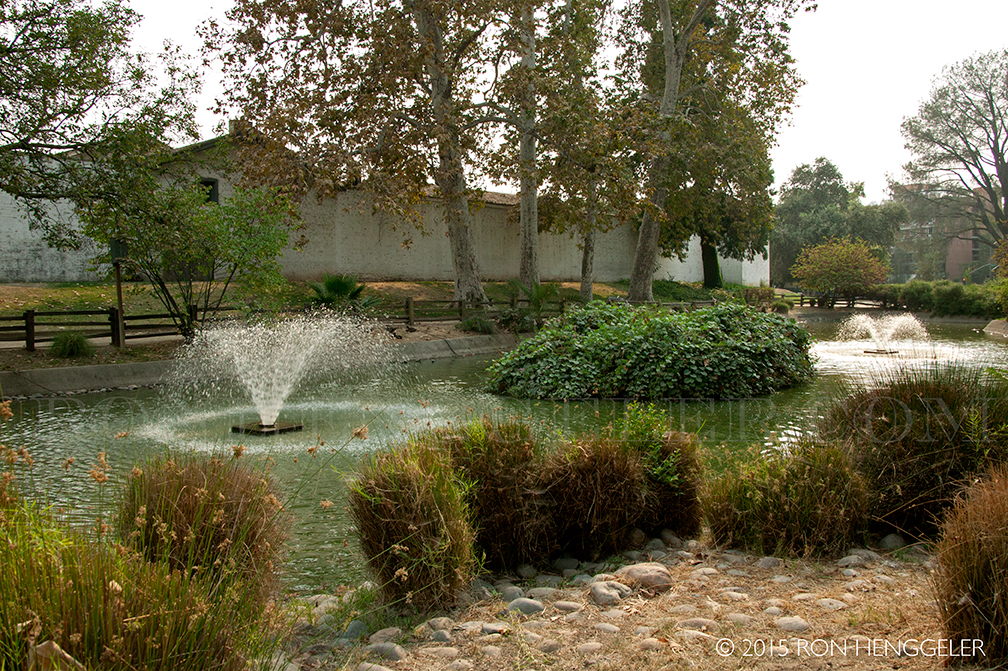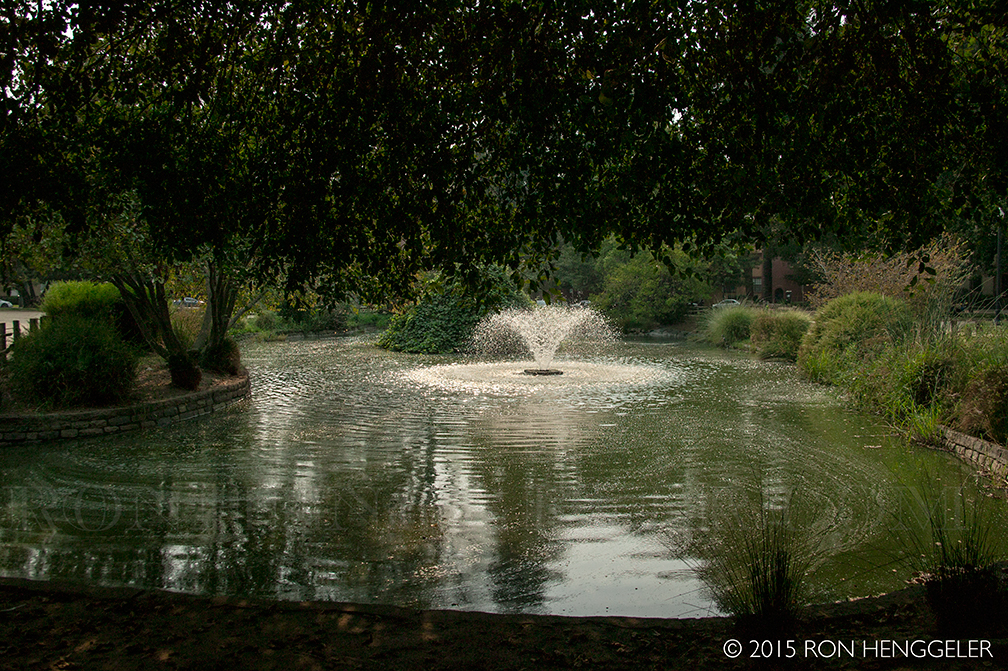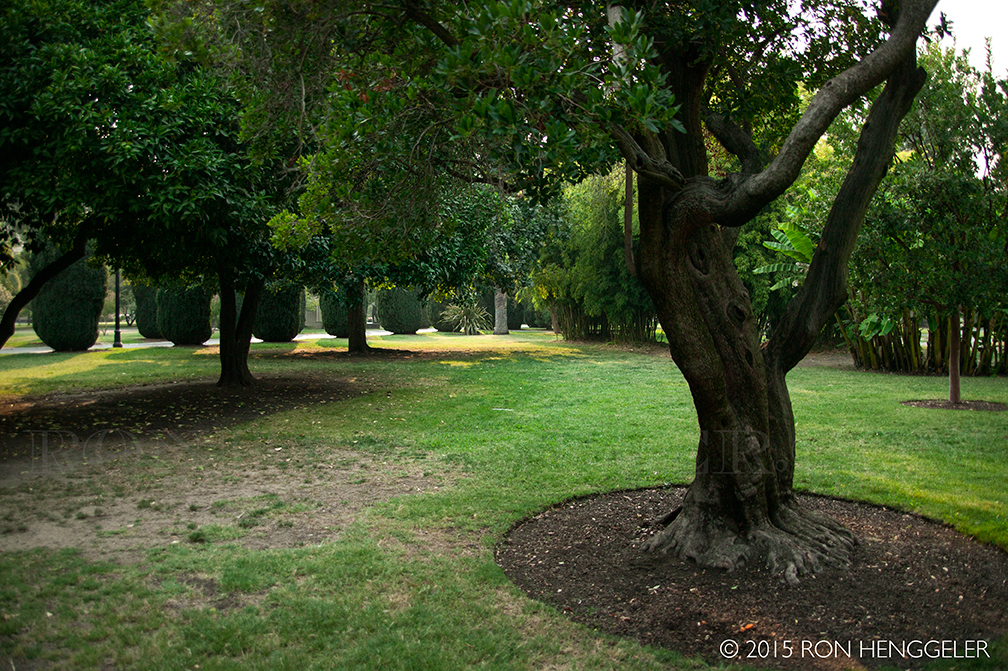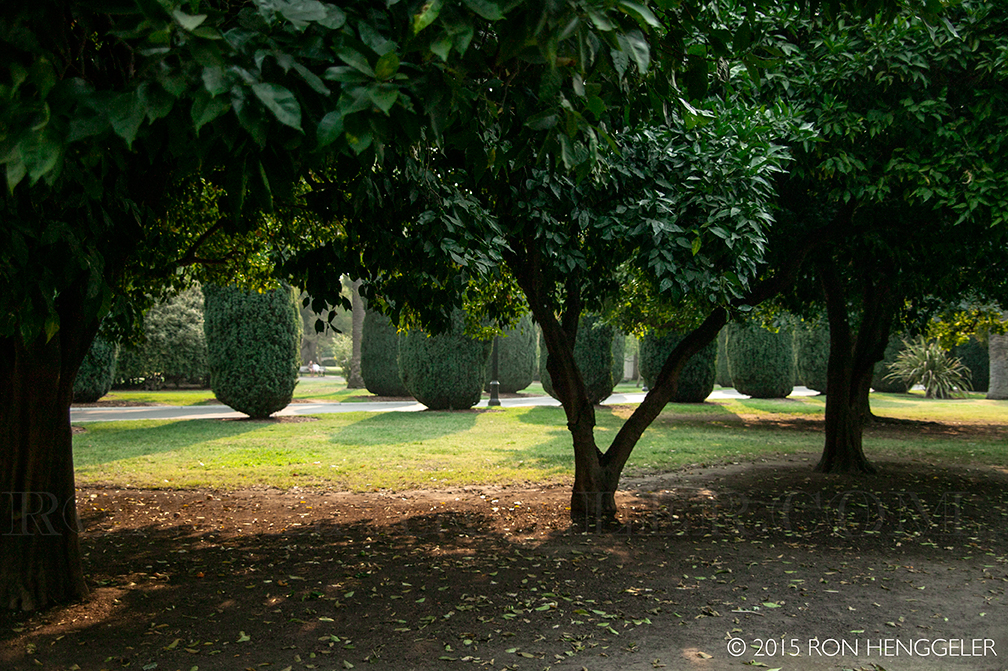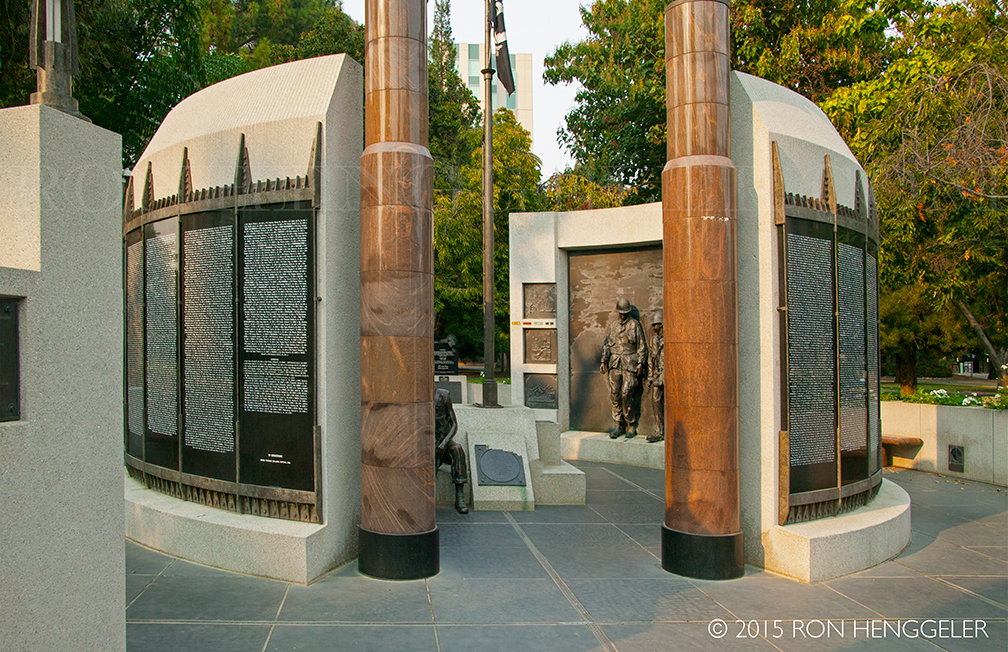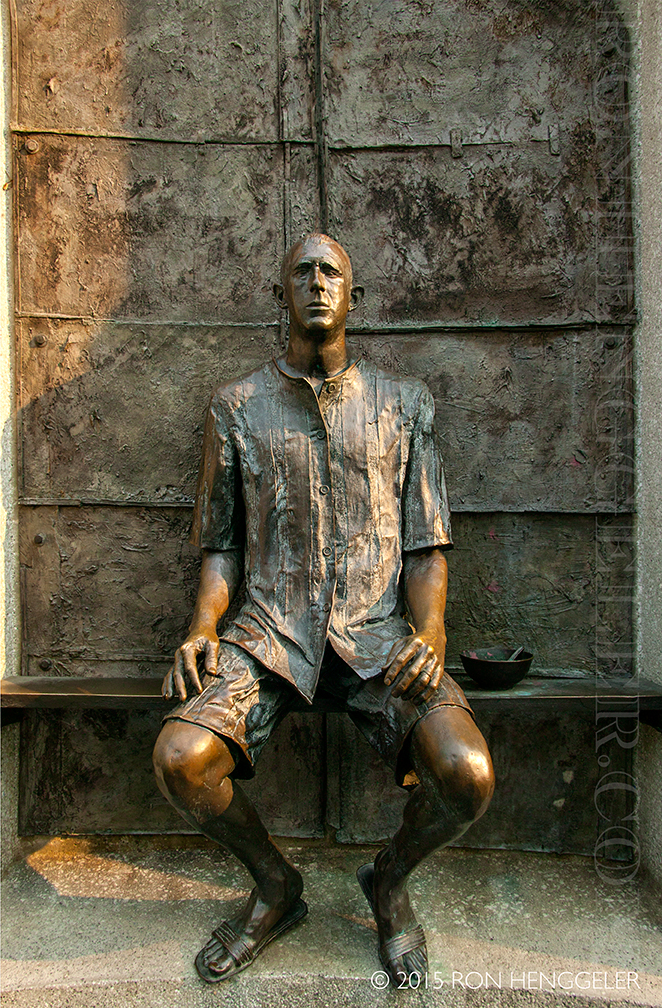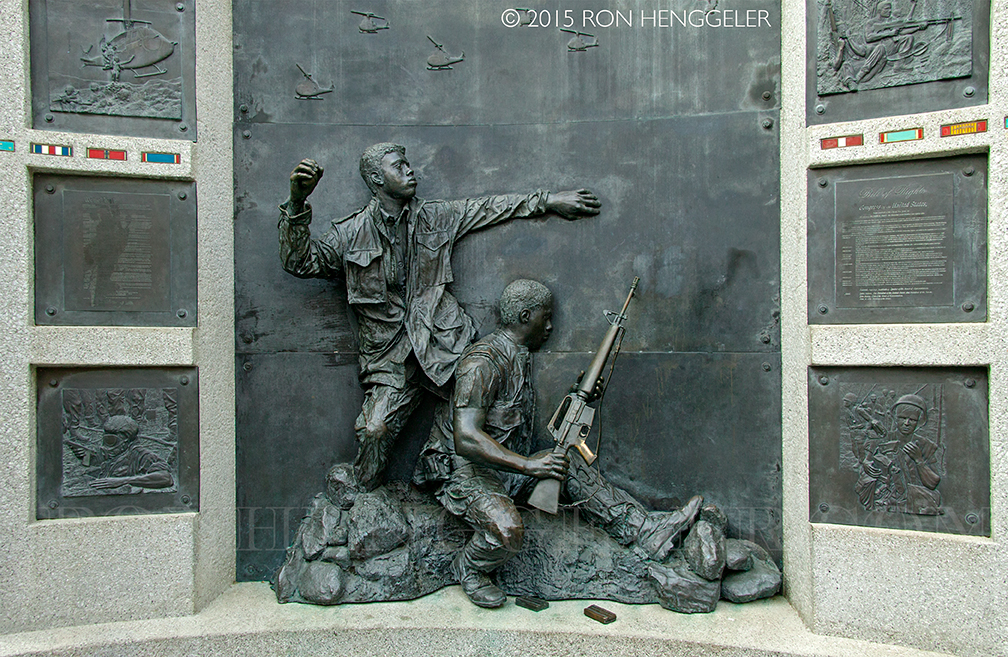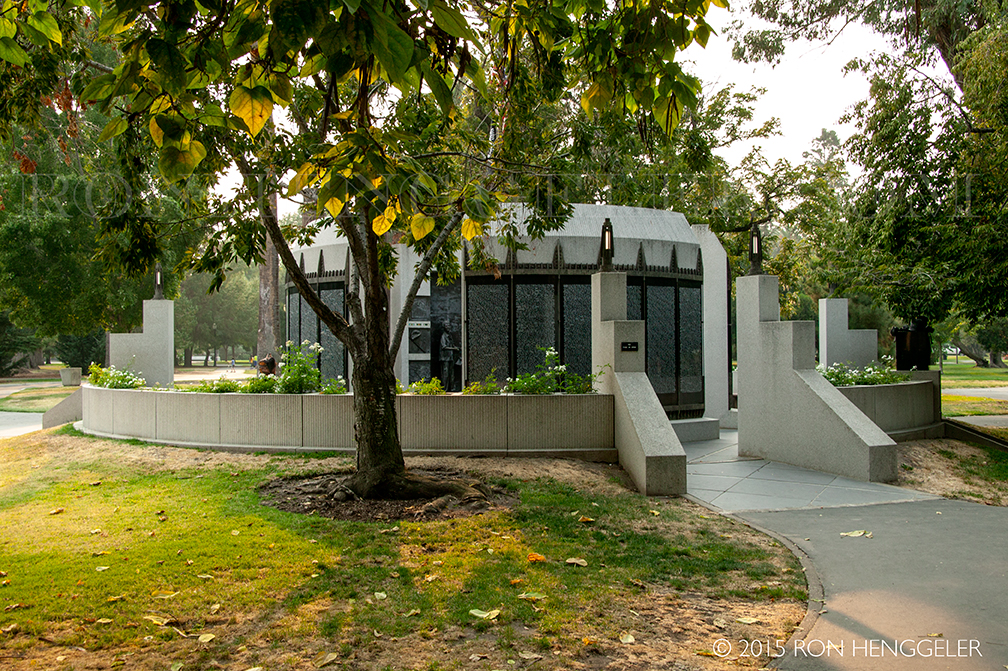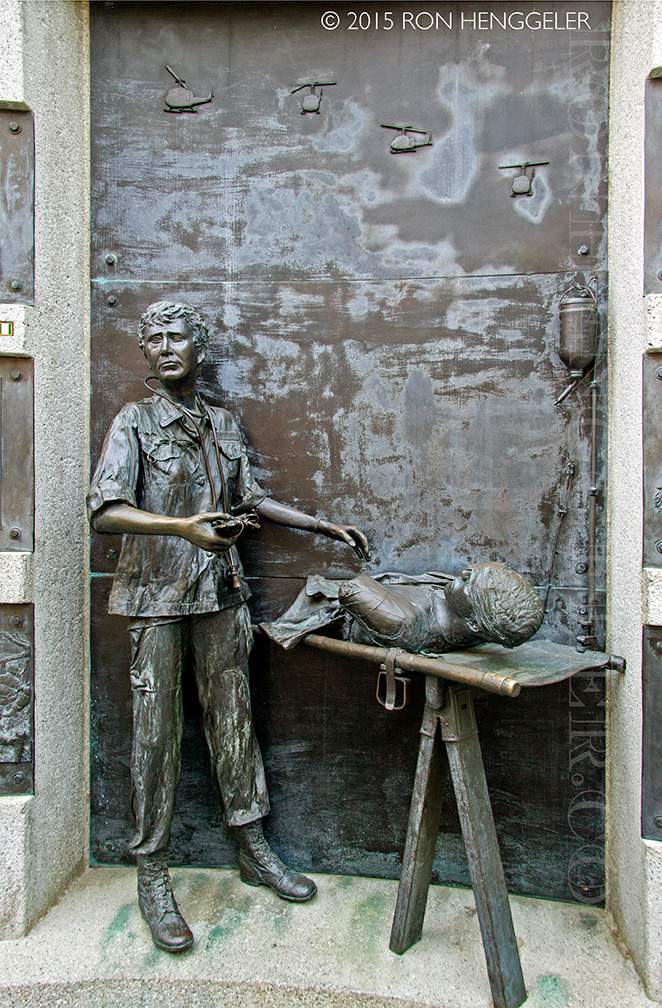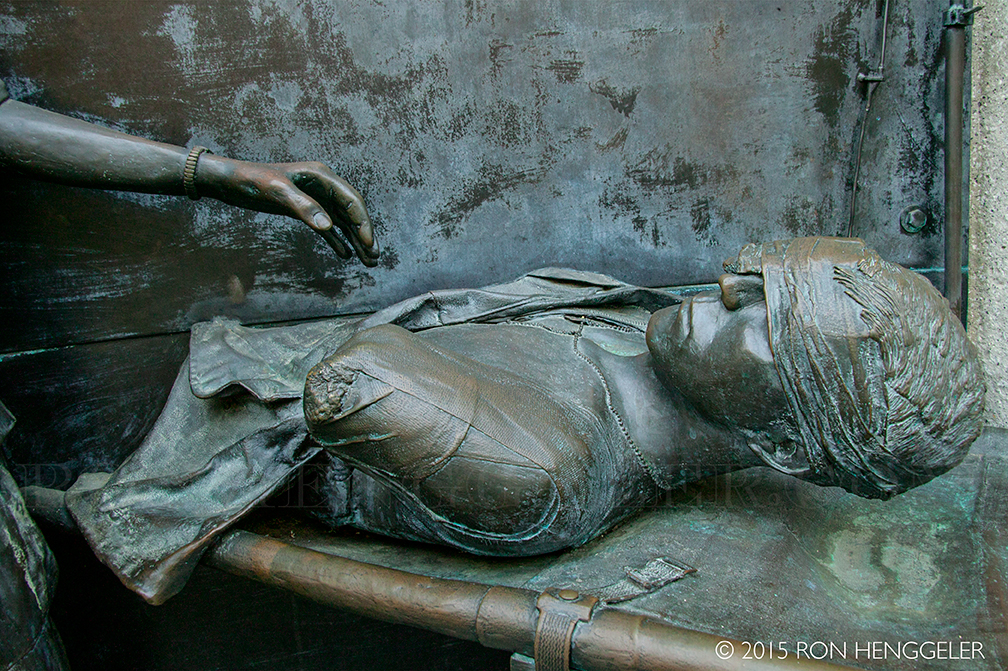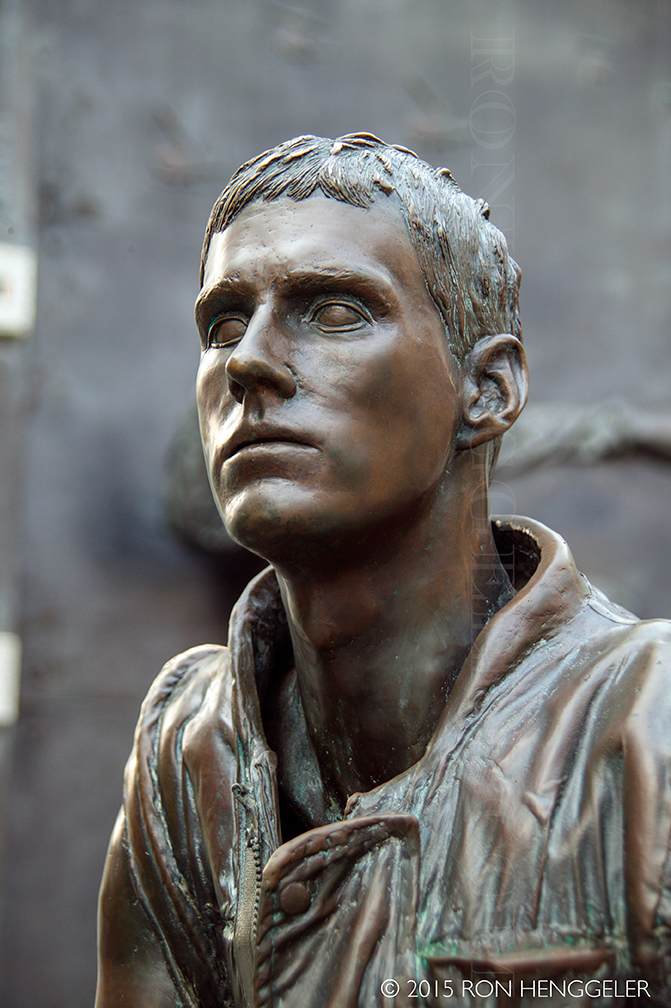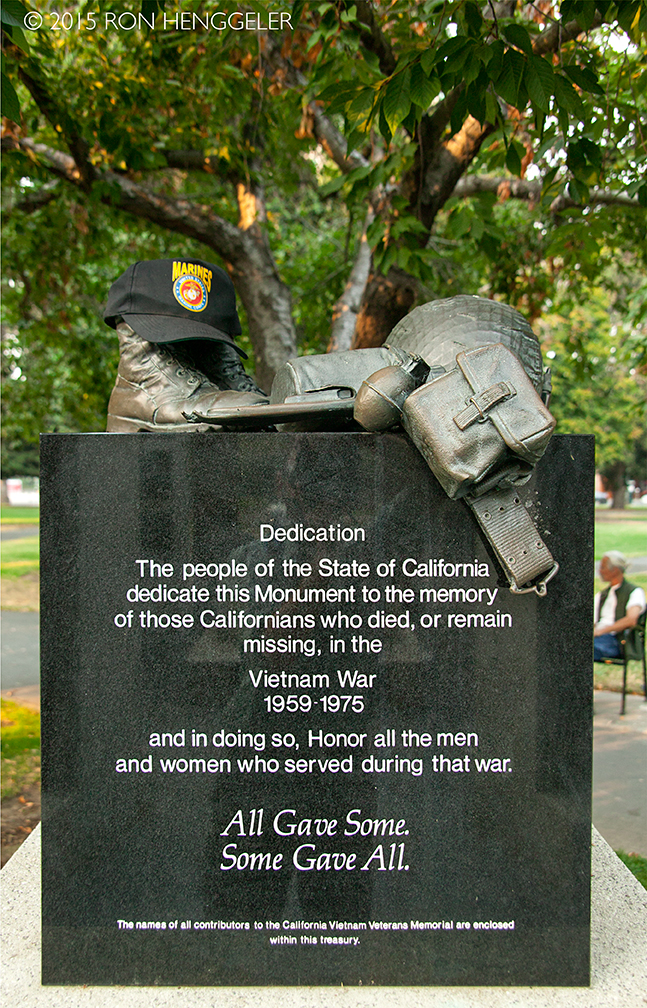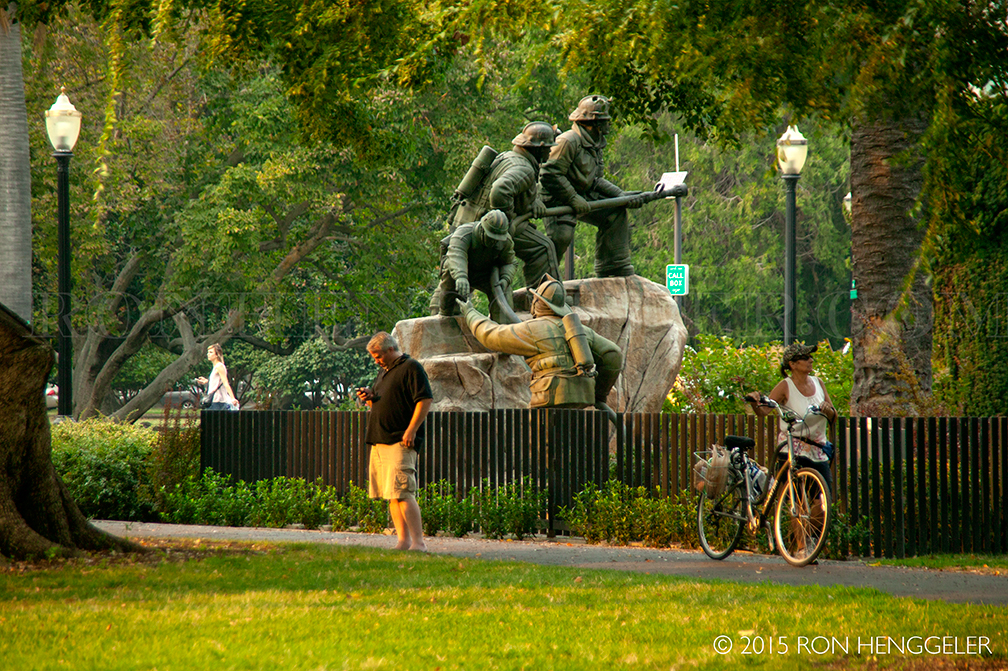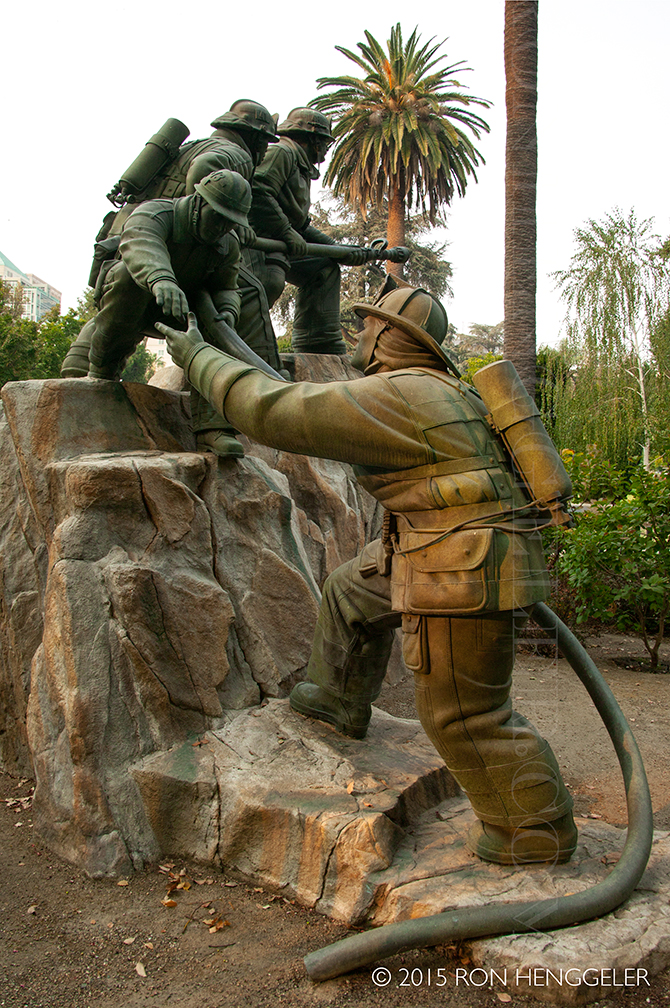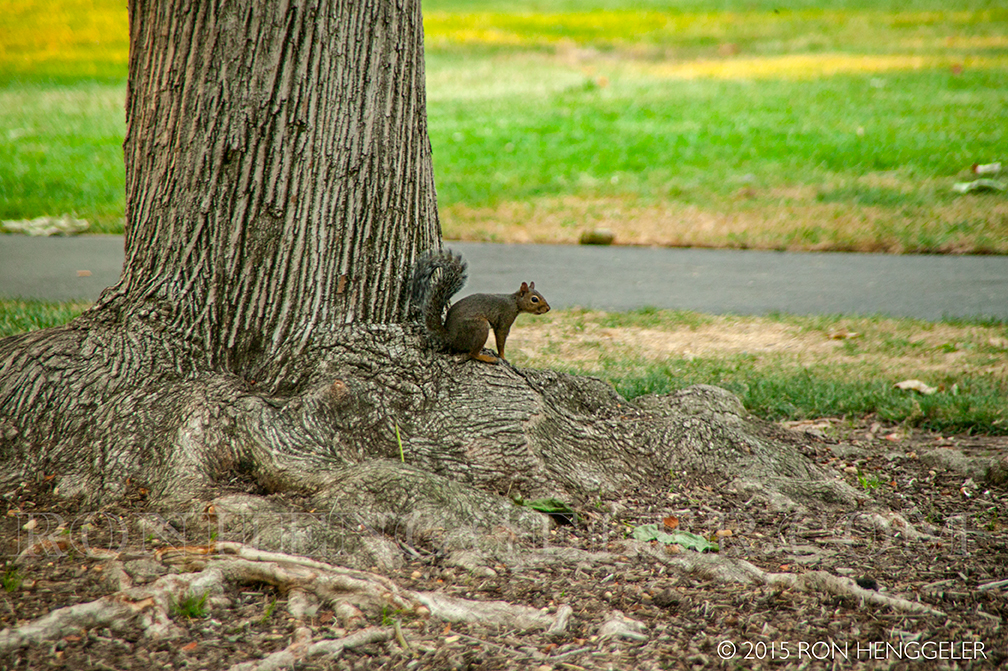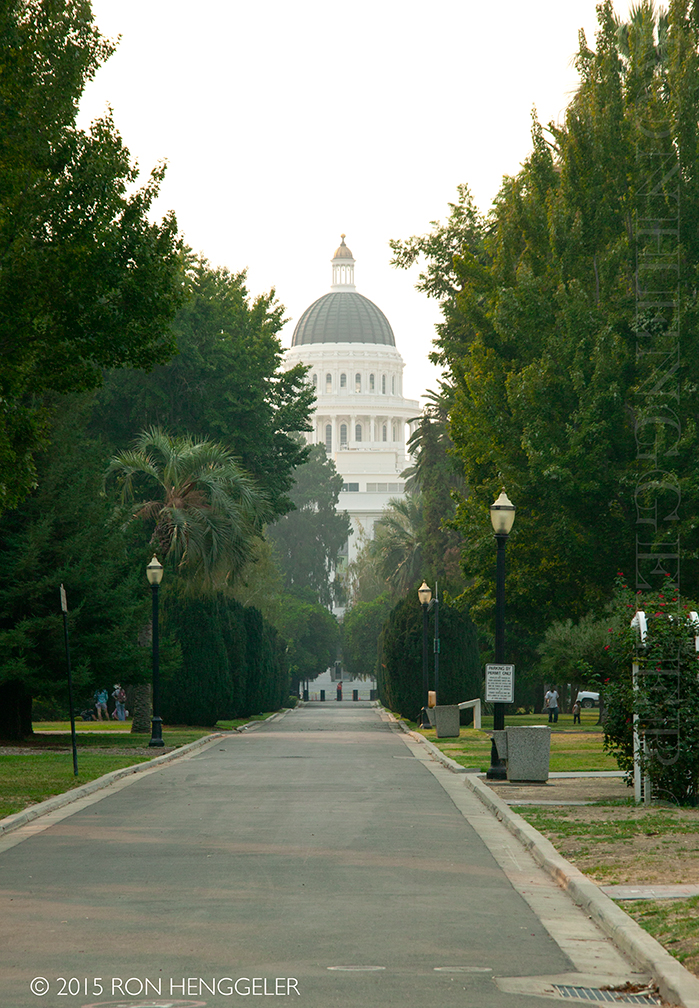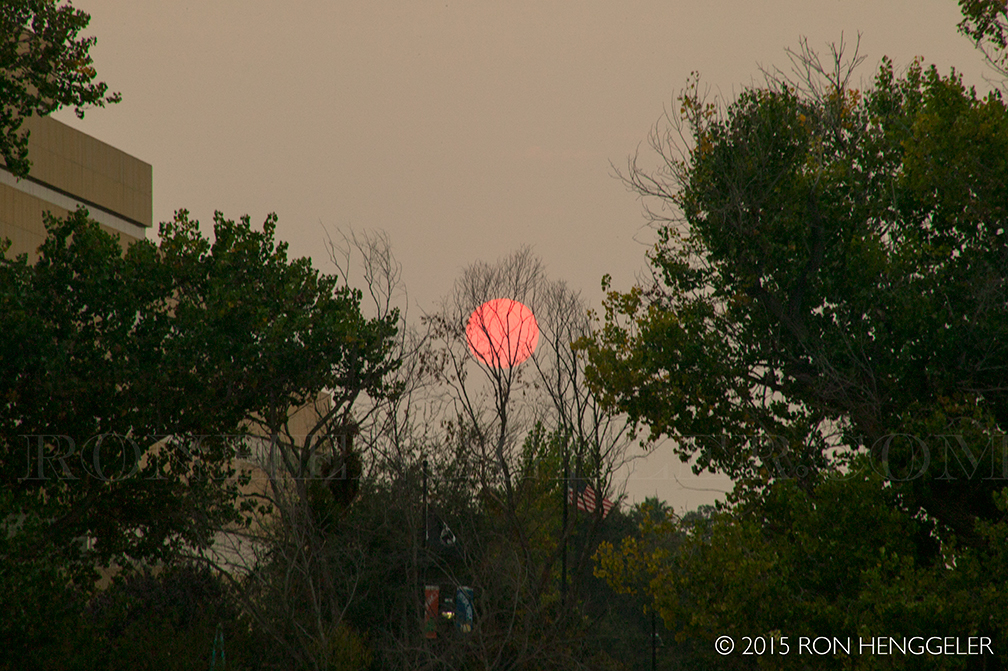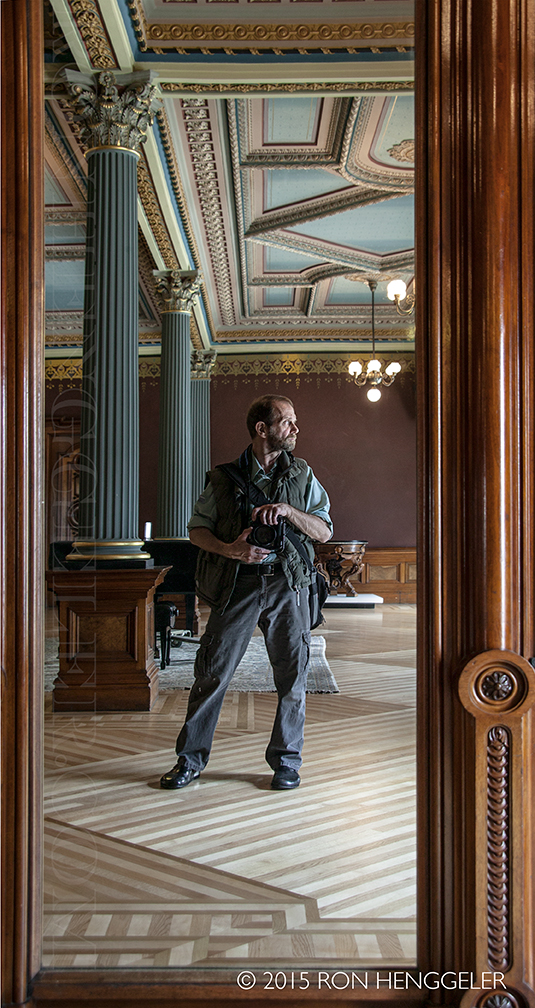RON HENGGELER |
September 19, 2015
David Ligare at the Crocker Museum, Sutter's Fort, and California's Vietnam Vet Memorial
Early last month, I sent out a collection of photos that I'd taken of Virgil Thomson back in the late 70's and throughout the 80's. In one of the photos, Thomson sits with his friends, Lou Harrison and his partner Bill, and two other younger men. At the time that I sent out the photos, I could not remember the names of the two younger men. But a couple of days after sending out the photos, I received an email from David Ligare (who is on my mailing list), informing me that it is he and his partner of 43 years Gary Smith who are the two young men in the old photo. David is an artist, one of the best painters alive, who currently has a one man show at the Crocker Museum in Sacramento. Last Sunday September 13, I drove to Sacramento to see David Ligare's Show at the Crocker Museum. Afterwards, in 98º heat and a thick smokey haze from the nearby Valley Fire raging out of control, I visited the historic Sutter's Fort. Afterwards, with only an hour before sunset, I walked the gardens around the California State Capitol Building viewing the monuments and memorials. Here are some of my photos from last Sunday's visit to Sacramento.
Friends of Virgil Thomson in Santa Cruz On the left, Lou Harrison and his partner Bill Colvig (center) On the far right, Gary Smith and David Ligare I took this photo circa 1980's To view the Thomson photos, go here: http://www.ronhenggeler.com/Newsletters/2015/8.10/Newsletter.html |
The Crocker Art Museum in Sacramento, California is the longest continuously-operating art museum in the West. The Museum hosts one of the state’s premier collections of Californian art. The collection contains works dating from the Gold Rush to the present day, a collection of master drawings, European paintings, one of the largest international ceramics collections in the U.S. and collections of Asian, African, and Oceanic art. |
In 1869, Edwin B. Crocker, a wealthy banker and landowner, and Margaret Crocker began to assemble a significant collection of paintings and drawings during an extended trip to Europe just a year after their purchase of land on the corner of Third and O Street in the city of Sacramento. As a prominent California family, the Crockers supported many social and civic causes. Judge Crocker (1818–1875) served on the State Supreme Court. His brother was Charles Crocker, one of the “Big Four” railroad barons. In 1885, his widow, Margaret (1822–1901), fulfilled their shared vision of creating a public art museum when she presented the E. B. Crocker Art Gallery and collection to the City of Sacramento and the California Museum Association, “in trust for the public. The contents of which were valued at the time at more than $500,000.000 |
Text |
|
MOUNT TAMALPAIS FROM GREENBRAE n.d. Oil on canvas by Carl von Perbandt |
TWILIGHT ON THE OLD AMERICAN RIVER circa 1873 Oil on canvas by William Marple |
GENERAL JOHN A. SUTTER 1873 Oil on canvas by Stephen William Shaw |
David Ligare at the Crocker Museum http://crockerartmuseum.org |
My photo of the text on the wall near the door into David Ligare's Show of oil paintings |
David Ligare at the Crocker Museum http://crockerartmuseum.org |
Penelope, 1980 | oil on canvas, 40 x 48 in. | Collection of the Artist http://davidligare.com |
David Ligare at the Crocker Museum http://crockerartmuseum.org |
In Praise of Italy, 1987 oil on canvas, 60 x 40 in. David Ligare http://davidligare.com |
David Ligare at the Crocker Museum |
Detail of DIVER Oil on canvas 2003 David Ligare |
Detail of DIVER Oil on canvas 2003 David Ligare http://davidligare.com |
Detail of DIVER Oil on canvas 2003 David Ligare http://davidligare.com |
SEATED WOMAN WITH PEACH 1981 Graphite on paper David Ligare |
|
STUDY FOR ARIADNE Charcoal on paper 1982 David Ligare http://davidligare.com |
STUDY FOR ACHILLES AND THE BODY OF PATROCLUS 1985 Graphite on paper David Ligare |
Detail of STUDY FOR ACHILLES AND THE BODY OF PATROCLUS 1985 Graphite on paper David Ligare http://davidligare.com |
FIGURE STUDY Graphic on paper 1982 David Ligare |
DELOS ( THROWN DRAPERY) Oil on canvas 1978 David Ligare |
David Ligare at the Crocker Museum |
David Ligare at the Crocker Museum |
|
HERCULES AT THE CROSSROADS Oil on canvas 1997 David Ligare http://davidligare.com |
David Ligare at the Crocker Museum |
SHEPHERD IN THE RUINS OF DELPHI (ET IN ARCADIA EGO) Oil on canvas 1982 David Ligare |
Detail of SHEPHERD IN THE RUINS OF DELPHI (ET IN ARCADIA EGO) Oil on canvas 1982 David Ligare http://davidligare.com |
Landscape with a Running Horse, 1990 oil on canvas, 32 x 48 in. David Ligare |
|
Landscape with an Archer, 1991 oil on canvas, 116 x 80 in. David Ligare http://davidligare.com |
Arete (Black Figure on a White Horse), 2000 oil on canvas, 96 x 116 in. David Ligare |
David Ligare at the Crocker Museum http://crockerartmuseum.org |
Summa, 2001 | oil on canvas, 40 x 48 in. David Ligare http://davidligare.com |
|
Achilles and the Body of Patroclus, 1986 oil on canvas, 60 x 78 in. David Ligare |
|
Penelope, 1980 | oil on canvas, 40 x 48 in. | Collection of the Artist http://davidligare.com |
|
|
|
Self-portrait in a mirror at the Crocker Museum |
|
PORTRAIT OF CHARLES CROCKER Oil on canvas 1874 by Stephen William Shaw |
PORTRAIT OF LELAND STANFORD Oil on canvas 1874 by Stephen William Shaw |
PORTRAIT OF MARK HOPKINS Oil on canvas 1874 by Stephen William Shaw |
PORTRAIT OF COLLIS HUNTINGTON Oil on canvas 1873 by Stephen William Shaw |
PORTRAIT OF JUDGE E.B. CROCKER Oil on canvas 1874 by Stephen William Shaw |
A mural on the side of the the Masonic Temple (The mural is a play on the famous oil painting SUNDAY MORNING IN THE MINES, painted in 1872 by Charles Christian Nahl, on display at the Crocker Museum) 1123 J Street in Sacramento |
Detail of the Masonic Temple 1123 J Street in Sacramento |
Bronze statue of General John A. Sutter The plaque on the base reads: General John A. Sutter February 15, 1803 - June 18, 1880 Swiss Immigrant Founder of New Helvetia The beginning of Sacramento Builder of Sutter's Fort A man of vision and compassion who deserves the respect and gratitude of Americans and Swiss |
The "Fort" built by Swiss immigrant John Sutter more than 150 years ago was not only located at a pivotal point in California. It was a pivotal point in history. This combination of big dreams, bold adventures and reality all manifest themselves at Sutter's Fort State Historic Park and help bring California history to life. |
John Augustus Sutter was born in Europe to Swiss-German parents in 1803. After several financial reverses, like millions of others in Europe during the time, Sutter set out to make his fortune in America. After a series of adventures that ranged from Missouri and Santa Fe to Hawaii and Alaska, Sutter finally made it to California and arrived in Sacramento in the late fall of 1839. |
In Sacramento, he built what came to be known as Sutter's Fort -- with walls that were 2 1/2 feet thick and 15 to 18 feet high -- and developed what he considered to be the real wealth of California -- crops such as grapes and wheat, along with vast herds of cattle. Aligning himself with the Mexican authorities, at one point, with his various land grants, Sutter owned more than 150,000 acres of the Central Valley, and was a generous host to such colorful and historically important characters as John C. Fremont and Kit Carson. |
In 1848, James Marshall, a carpenter working for Sutter, discovered gold at the sawmill Sutter was having built in Coloma, on the American River. Before the mill could be finished, word of the discovery was out. Sutter's workers deserted the Fort for the goldfields seeking their fortunes. By the 1850's, all that was left of Sutter's Fort was the central building. |
The Native Sons of the Golden West were influential in the restoration of the Fort which began in 1891 and was completed in 1893. Donated to the State of California, Sutter's Fort became a part of the California State Park System in 1947. Sutter's Fort stands as the oldest restored Fort in the United States. Today, the Fort is furnished and reconstructed to reflect its 1846 appearance. Many activities and programs recreate the past thanks to the volunteers who give their time to share their love of California History. |
|
SUTTER'S FORT. In 1841 John Sutter (1803–1880) established a fort in California's Sacramento Valley as the trade and commercial center of his New Helvetia colony. It contained a central building constructed of adobe bricks, surrounded by a high wall with bastions on opposite corners to guard against attack. Built around the interior of the wall were the workshops and stores that produced all goods necessary for New Helvetia to function as a self supporting community. Sutter's Fort housed a kitchen, able to serve up to two hundred workers and visitors a day; carpenter and blacksmith shops; a bakery and blanket factory; a general store and jail; and rooms that Sutter provided free to the region's new immigrants. Sutter's Fort is most often associated with James Marshall's discovery of gold in 1849, but the ensuing gold rush resulted in the destruction of the fort and its resources by miners and fortune hunters, and in the financial ruin of John Sutter. Sutter left New Helvetia in 1850, and Sutter's Fort fell into disrepair. When restoration efforts began in 1890, the central building was all that remained. The fort has been reconstructed and restored and is now maintained and administered as a California State Park. |
|
|
|
|
|
|
|
|
|
|
|
|
|
|
|
|
|
|
|
|
|
|
|
|
|
|
|
|
The garden grounds in the back outside Sutter's Fort |
The garden grounds in the back outside Sutter's Fort |
The garden grounds in the back outside Sutter's Fort |
|
|
The California Vietnam Veterans Memorial is located in the north-east corner of the State Capitol grounds at 15th Street and Capitol Avenue, Sacramento. It is found near the Rose garden in a quiet, lush setting. Wide, paved paths lead to the Memorial from the street as well as from the rest of the Capitol grounds. There is a large grassy area around the Memorial, with benches scattered around the area. The Memorial is circular in design, with full relief bronze sculptures depicting scenes from daily life during the war. The sculptures represent many sides of the war, with grunts, nurses, and POWs. The American flag waves over the Memorial. The 5,822 names of California's dead and missing are engraved on twenty-two black granite panels, arranged by their hometowns. In a ring arranged around the granite panels, there are stone benches facing the names. |
|
|
This memorial lists the names of Californians in military service who made the ultimate sacrifice in the Vietnam Conflict. These 5,657 names are inscribed on the California Vietnam Memorial in Sacramento. The California Vietnam Veterans Memorial dedicated December 10, 1988, is one of the most visited out of the 15 memorials in Capitol Park. Artist Rolf Kriken created the bronze statues of the Memorial. He recently redid the map of Vietnam which lies at the entrance of the Memorial. The new bronze map overlays the old map. The etchings on the original map had become worn by the footsteps of the thousands of visitors to the Memorial. Several memorial ceremonies are held at the memorial each year; the largest being "The Reading of the Names" held on the day before Memorial Day every year. At this event, volunteers read all of the 5000+ names on the memorial walls of the California service men and women who gave their lives in the Vietnam War. The outer surfaces of the Memorial's inner walls are faced with 22 panels of granite engraved with the names of those Californians killed and missing in action, listed alphabetically by home city. For this table, the panels are numbered 1-22, beginning with the panel to the right of the Memorial's entrance and going counterclockwise. |
https://www.calvet.ca.gov/VetServices/Pages/California-Vietnam-Veterans-Memorial.aspx |
|
https://www.calvet.ca.gov/VetServices/Pages/California-Vietnam-Veterans-Memorial.aspx |
|
|
The California Firefighters Memorial ... A Timeless Tribute
The California Firefighters Memorial is a unique and stunning tribute to more than 1,250 firefighters who have died in the line of duty since California became a state in 1850. The California Firefighters Memorial is located in Capitol Park, the grounds adjacent to the State Capitol in Sacramento, California. Capitol Park is a state and national landmark. http://www.cafirefoundation.org/go/cff/california-... |
The California Firefighters Memorial ... A Timeless Tribute
The California Firefighters Memorial is a unique and stunning tribute to more than 1,250 firefighters who have died in the line of duty since California became a state in 1850. The California Firefighters Memorial is located in Capitol Park, the grounds adjacent to the State Capitol in Sacramento, California. Capitol Park is a state and national landmark. http://www.cafirefoundation.org/go/cff/california-... |
|
Capitol Park |
The setting sun viewed through the smokey haze from the Valley Fire |
Self-portrait in a mirror at the Crocker Museum |
Newsletters Index: 2015, 2014, 2013, 2012, 2011, 2010, 2009, 2008, 2007, 2006
Photography Index | Graphics Index | History Index
Home | Gallery | About Me | Links | Contact
© 2015 All rights reserved
The images are not in the public domain. They are the sole property of the
artist and may not be reproduced on the Internet, sold, altered, enhanced,
modified by artificial, digital or computer imaging or in any other form
without the express written permission of the artist. Non-watermarked copies of photographs on this site can be purchased by contacting Ron.

